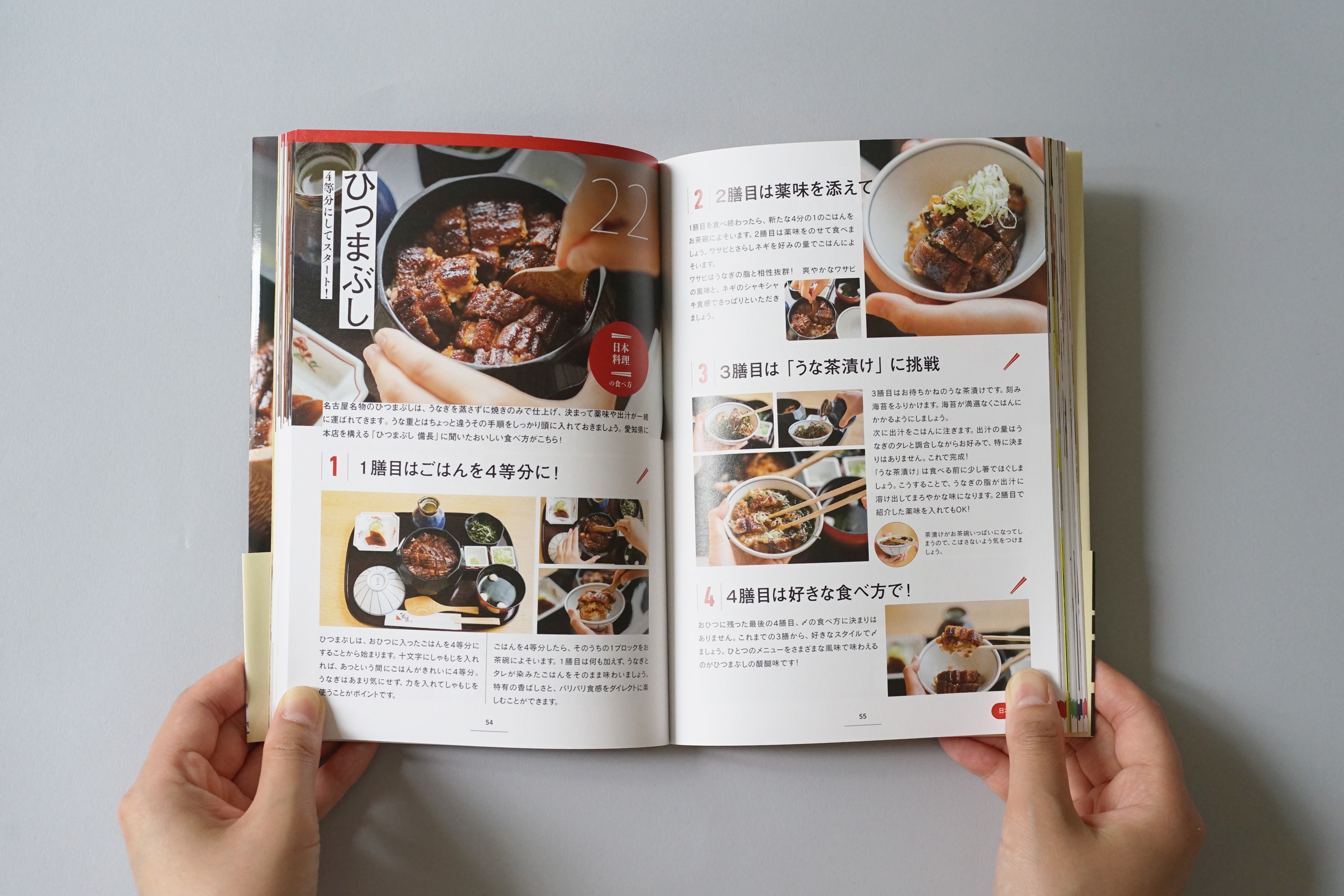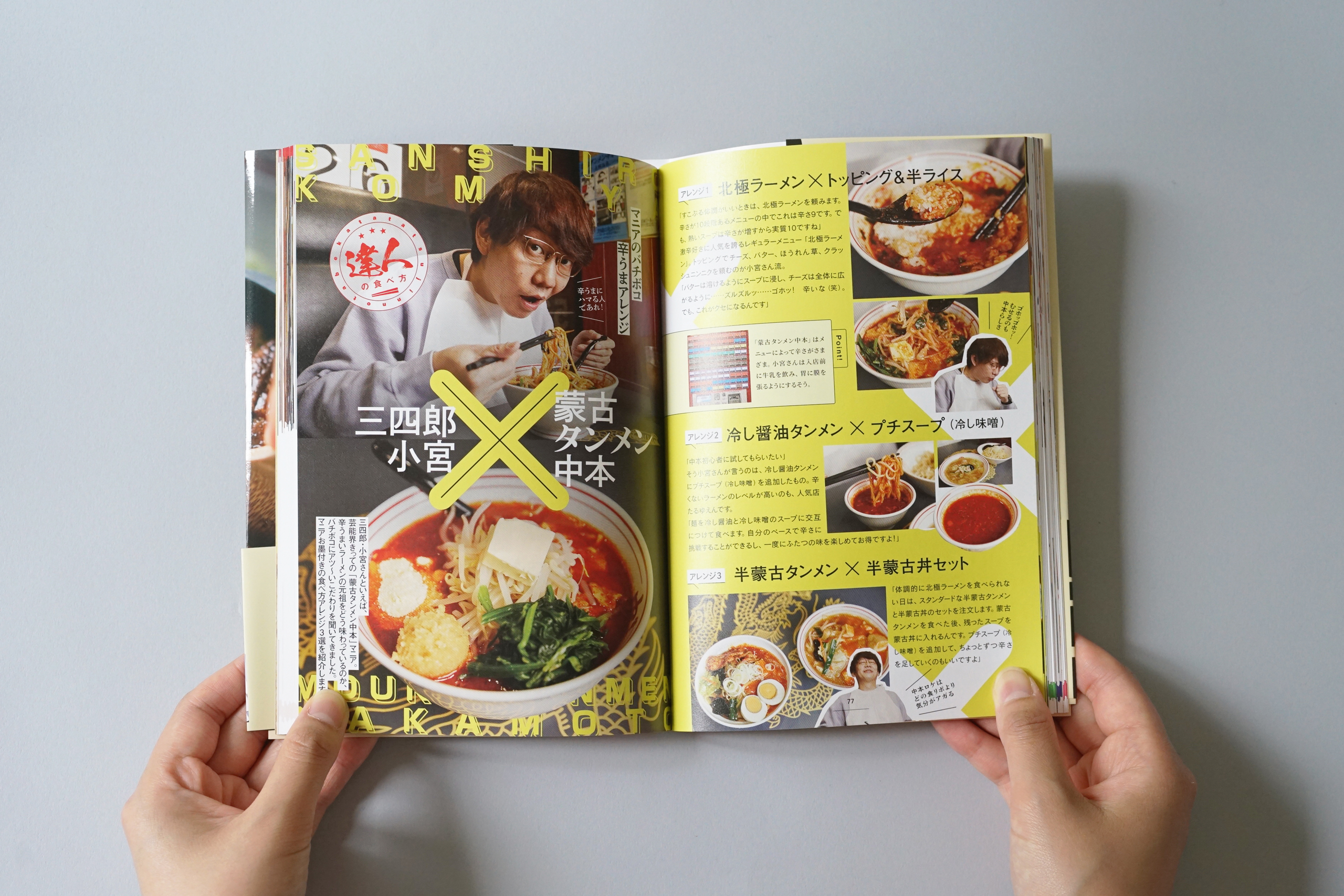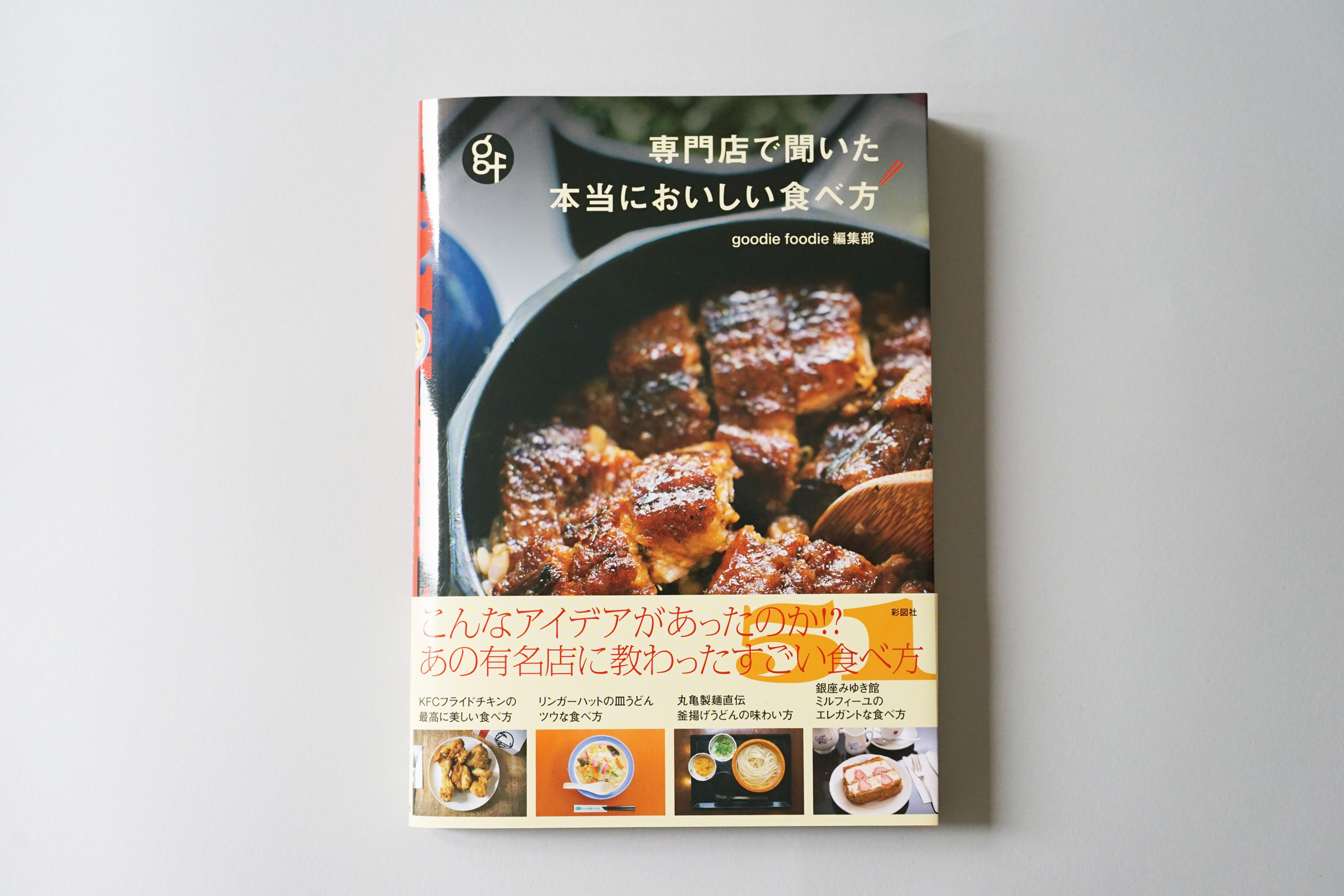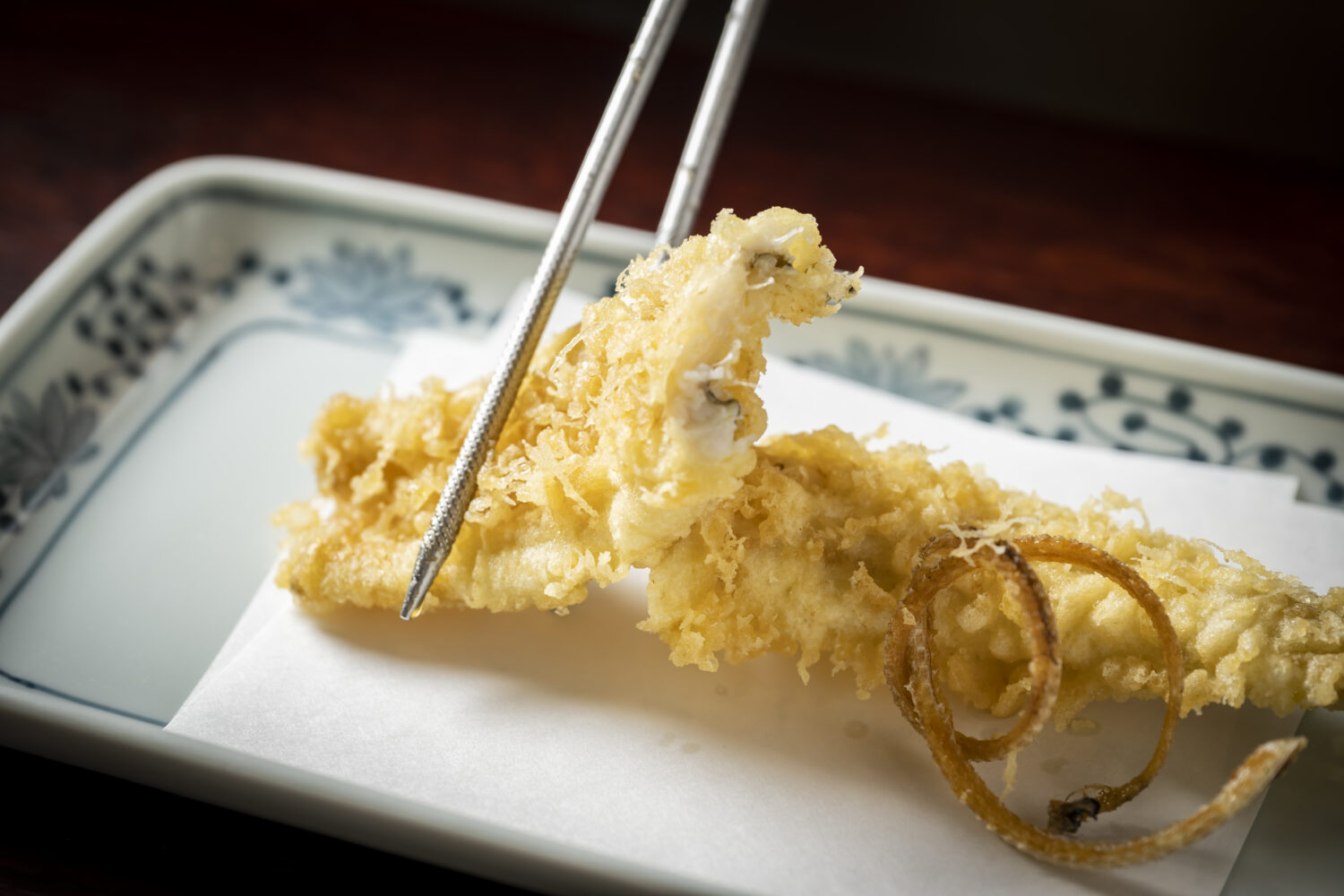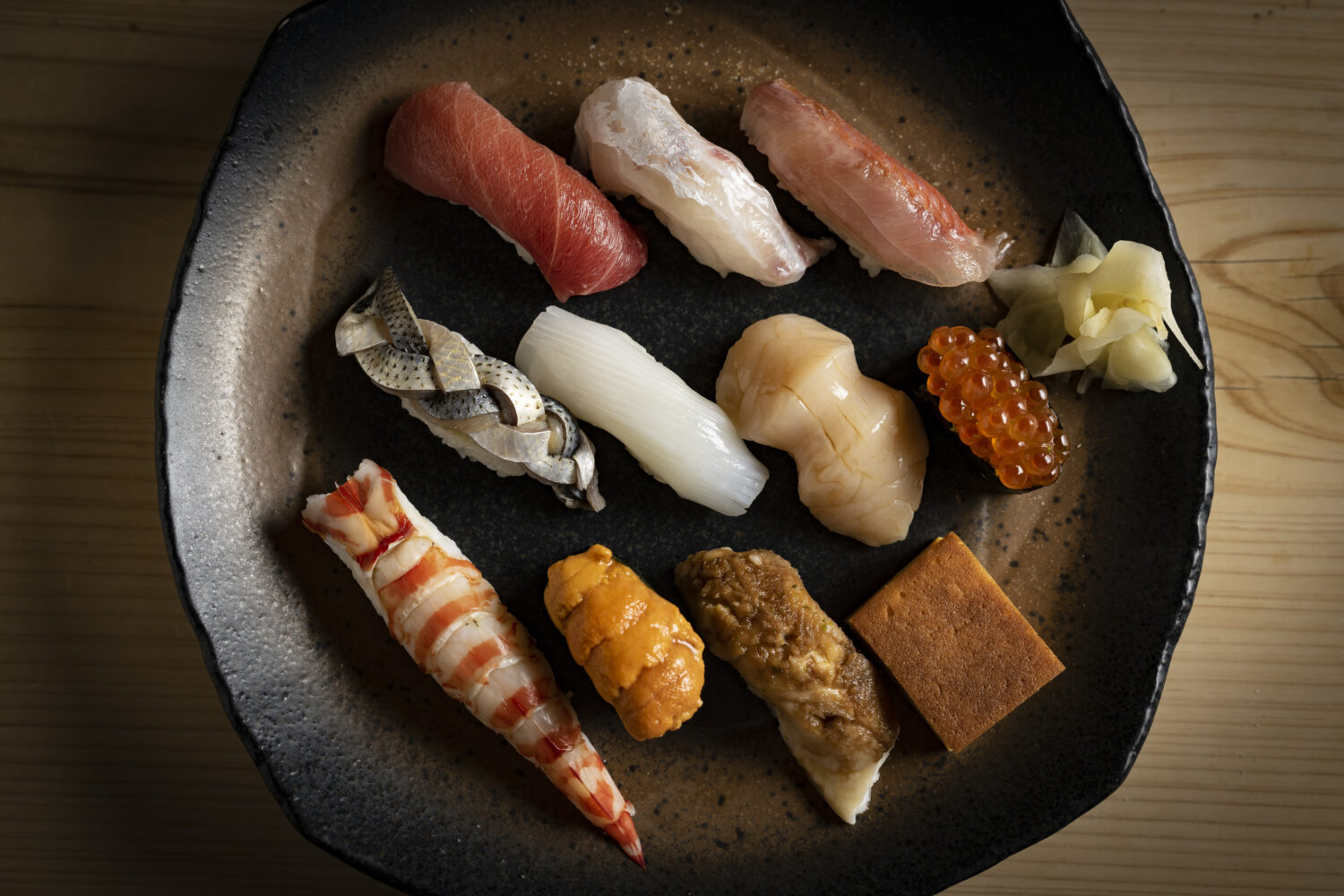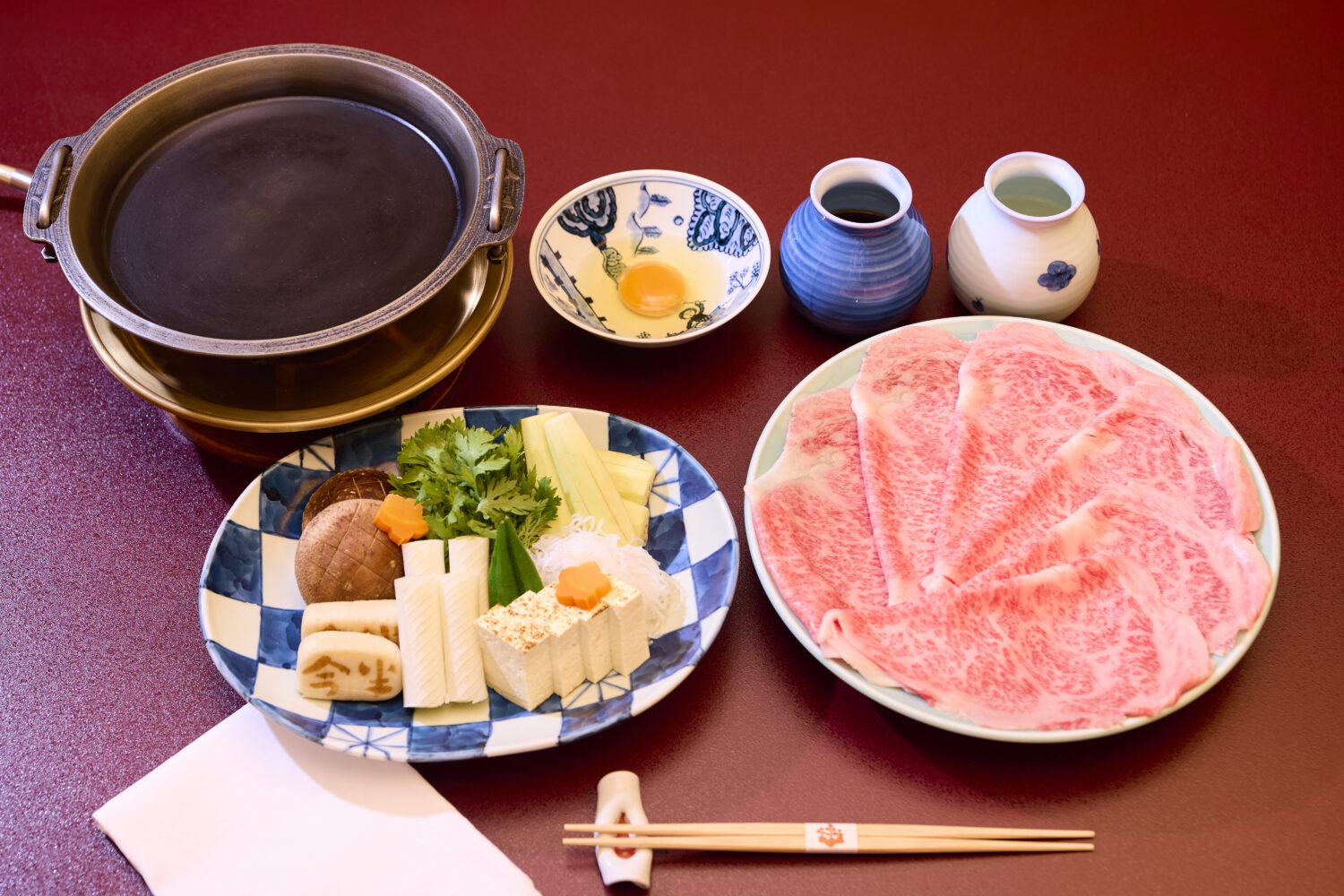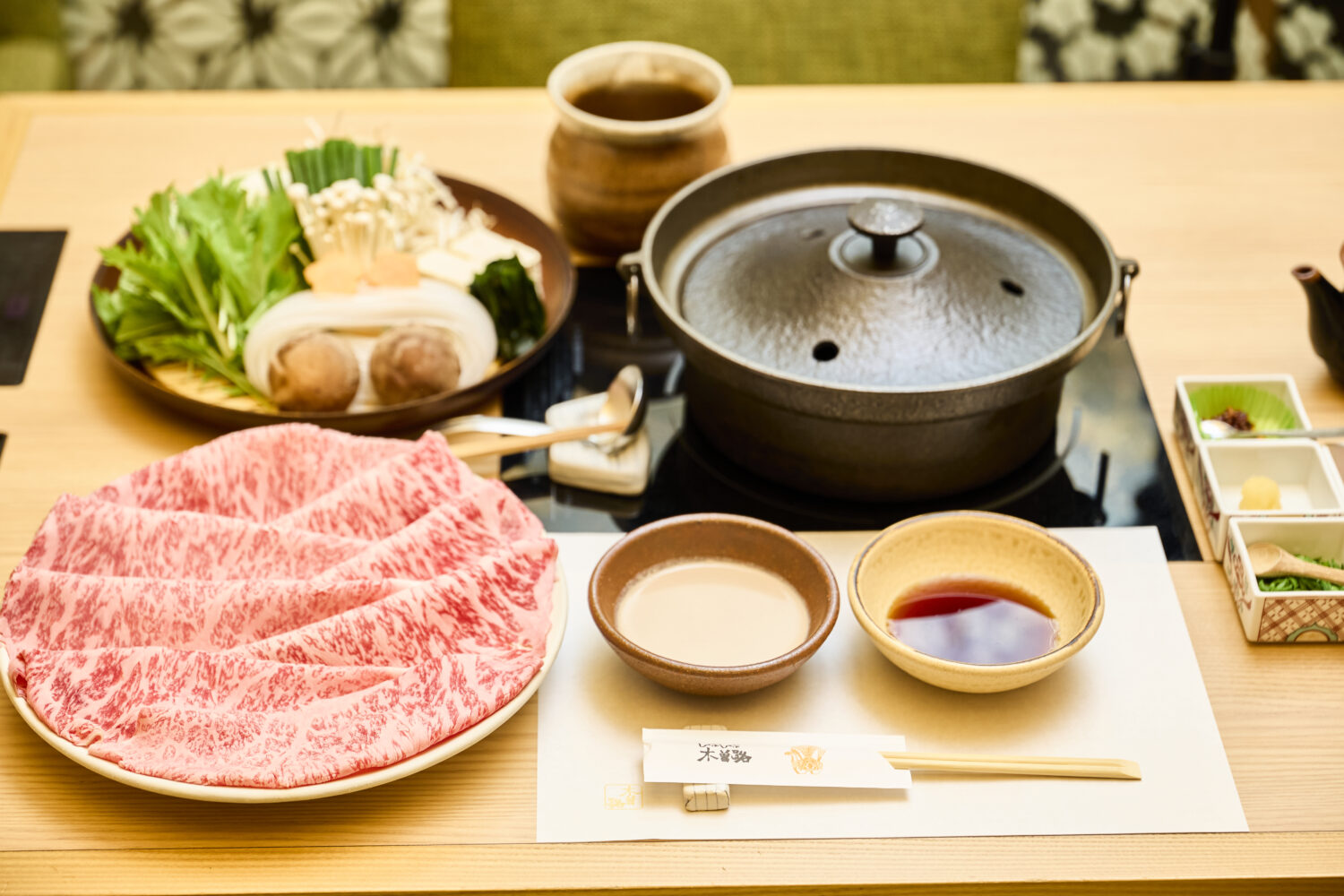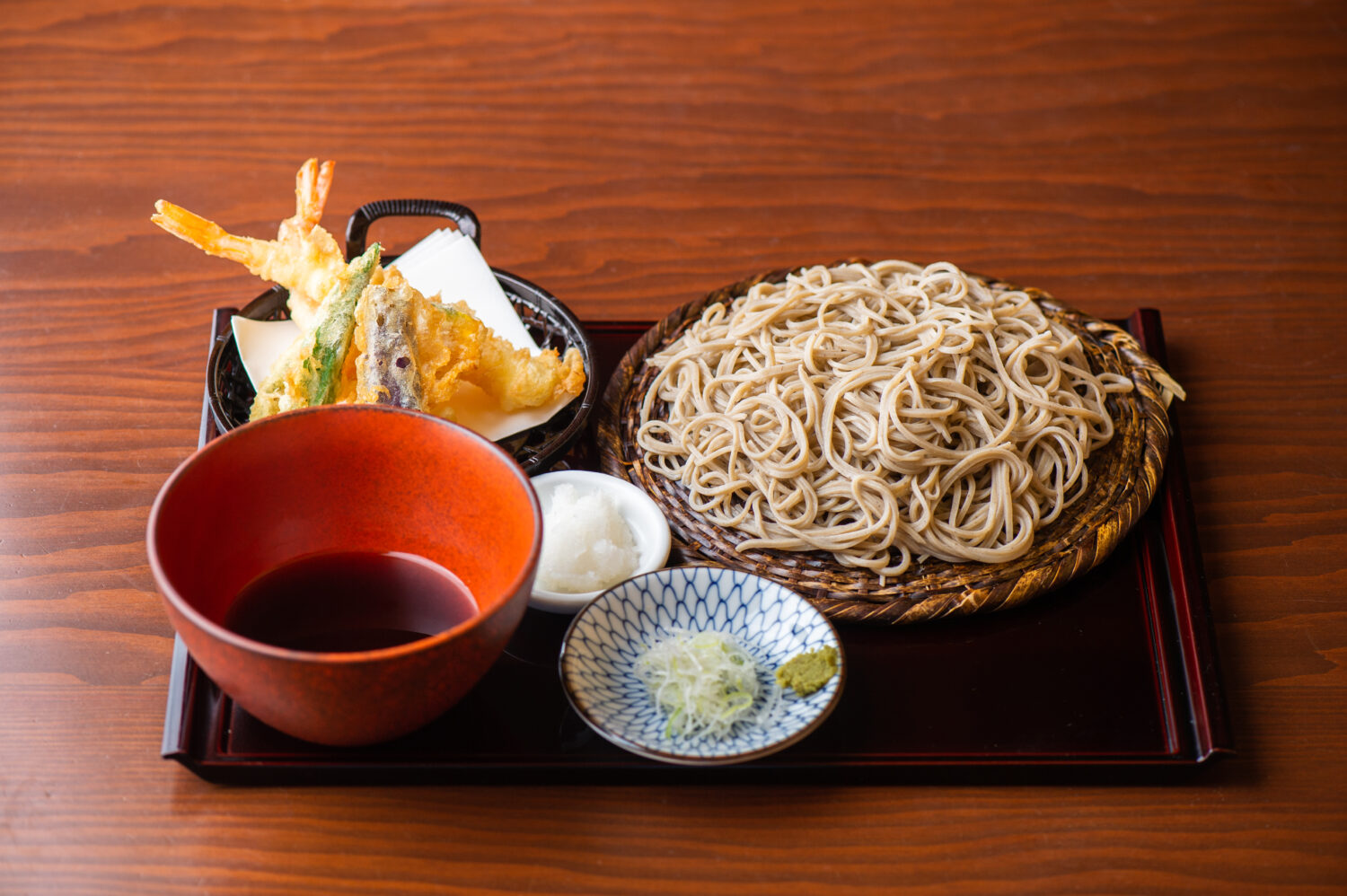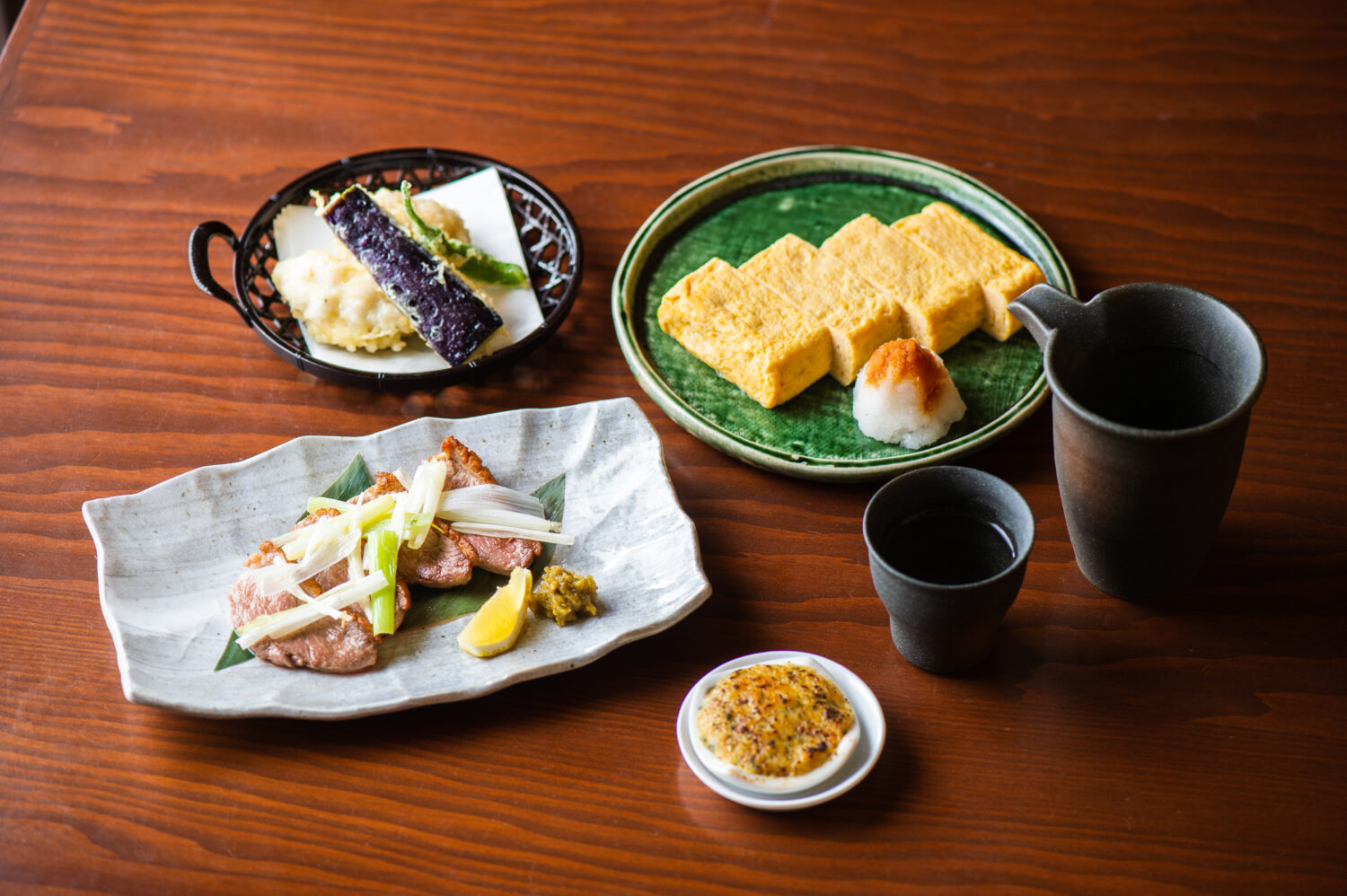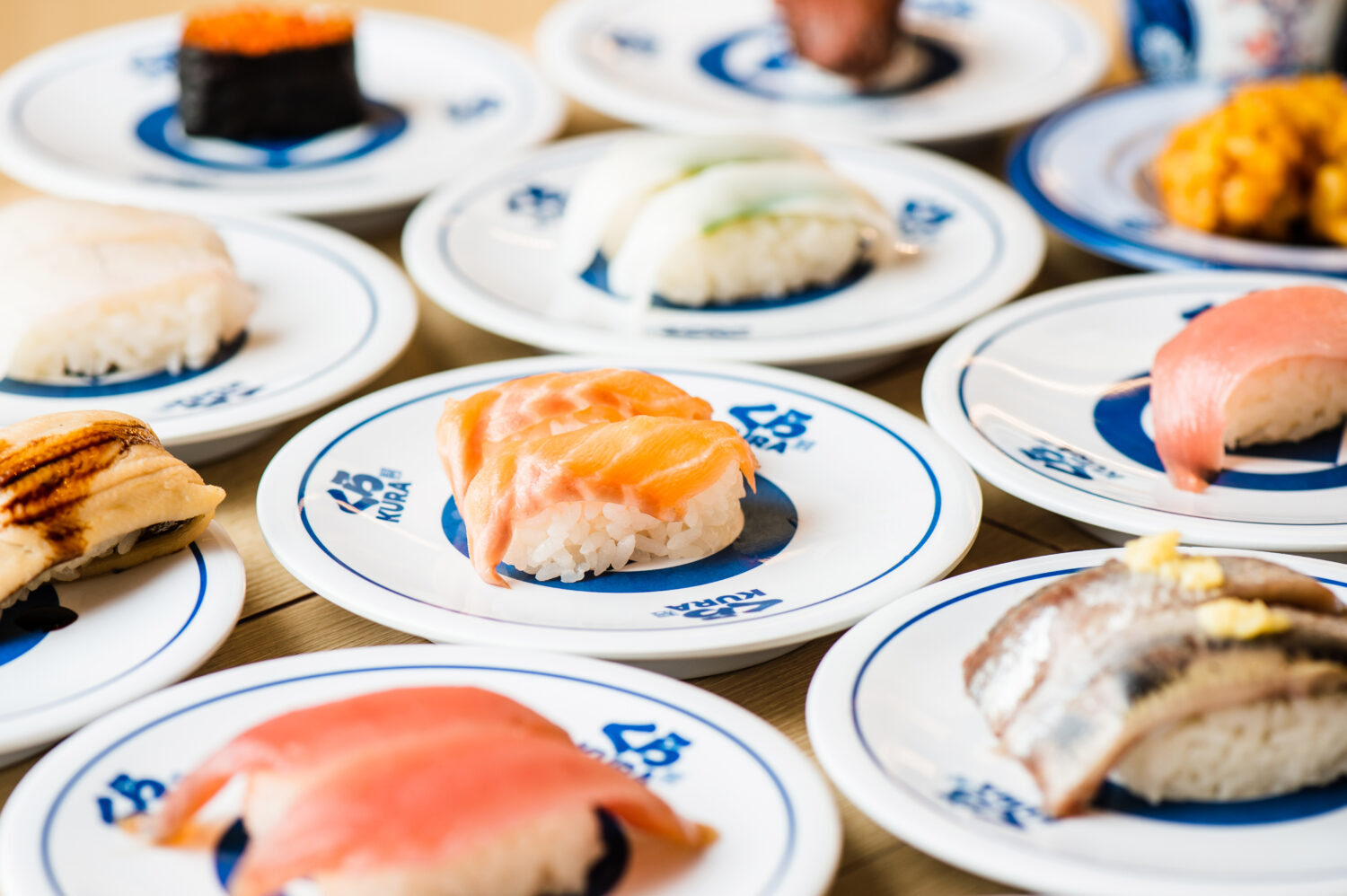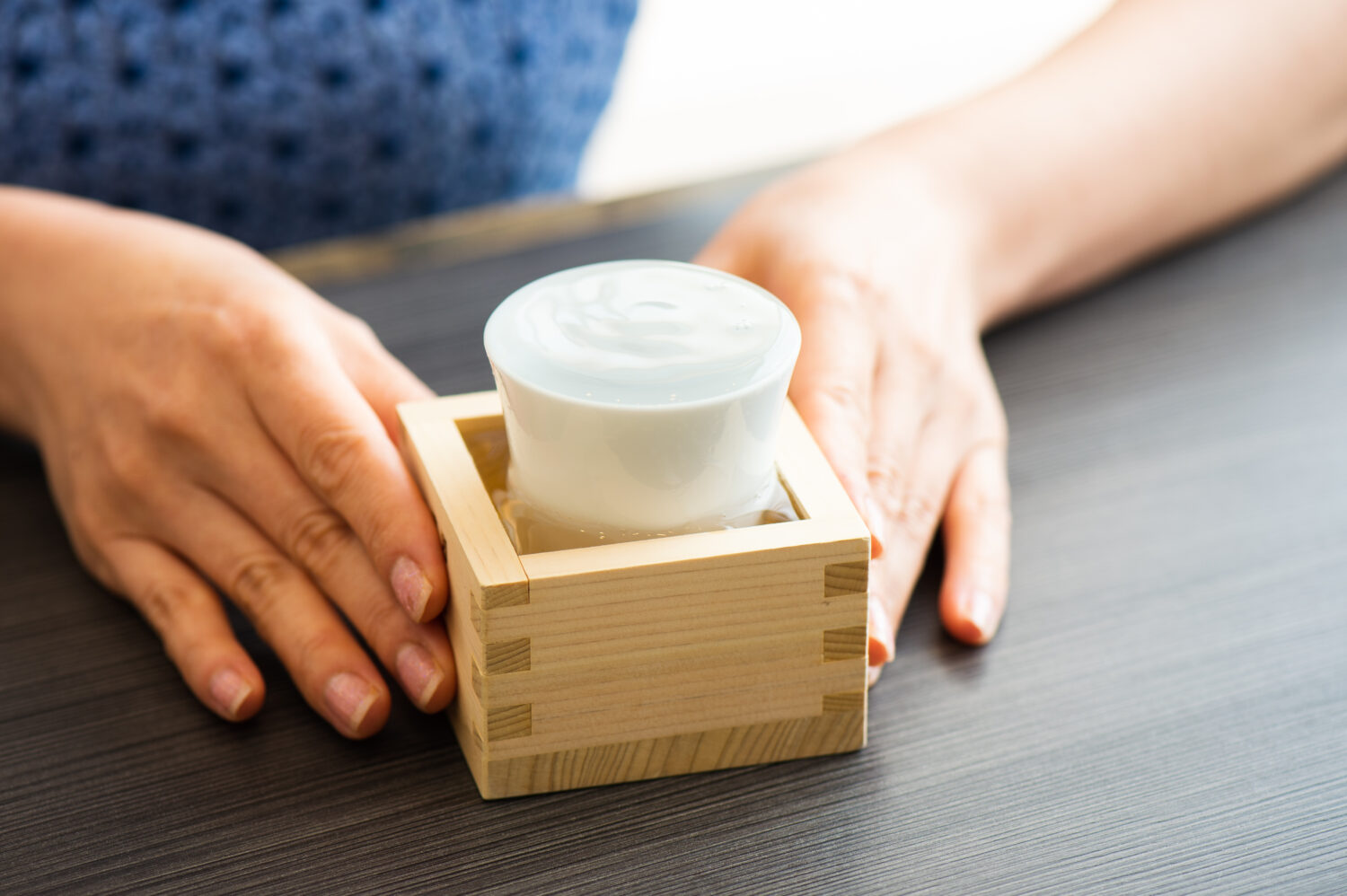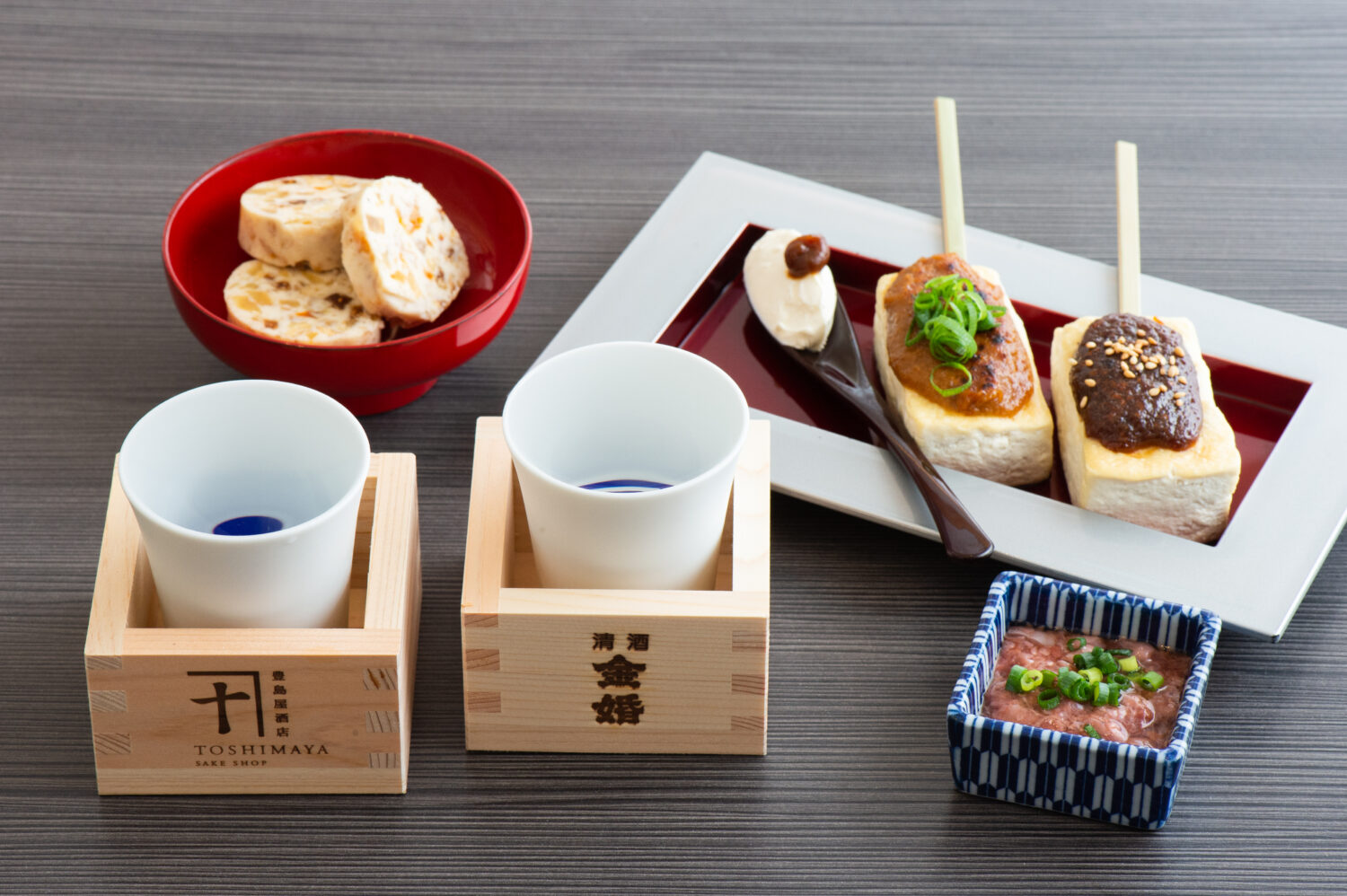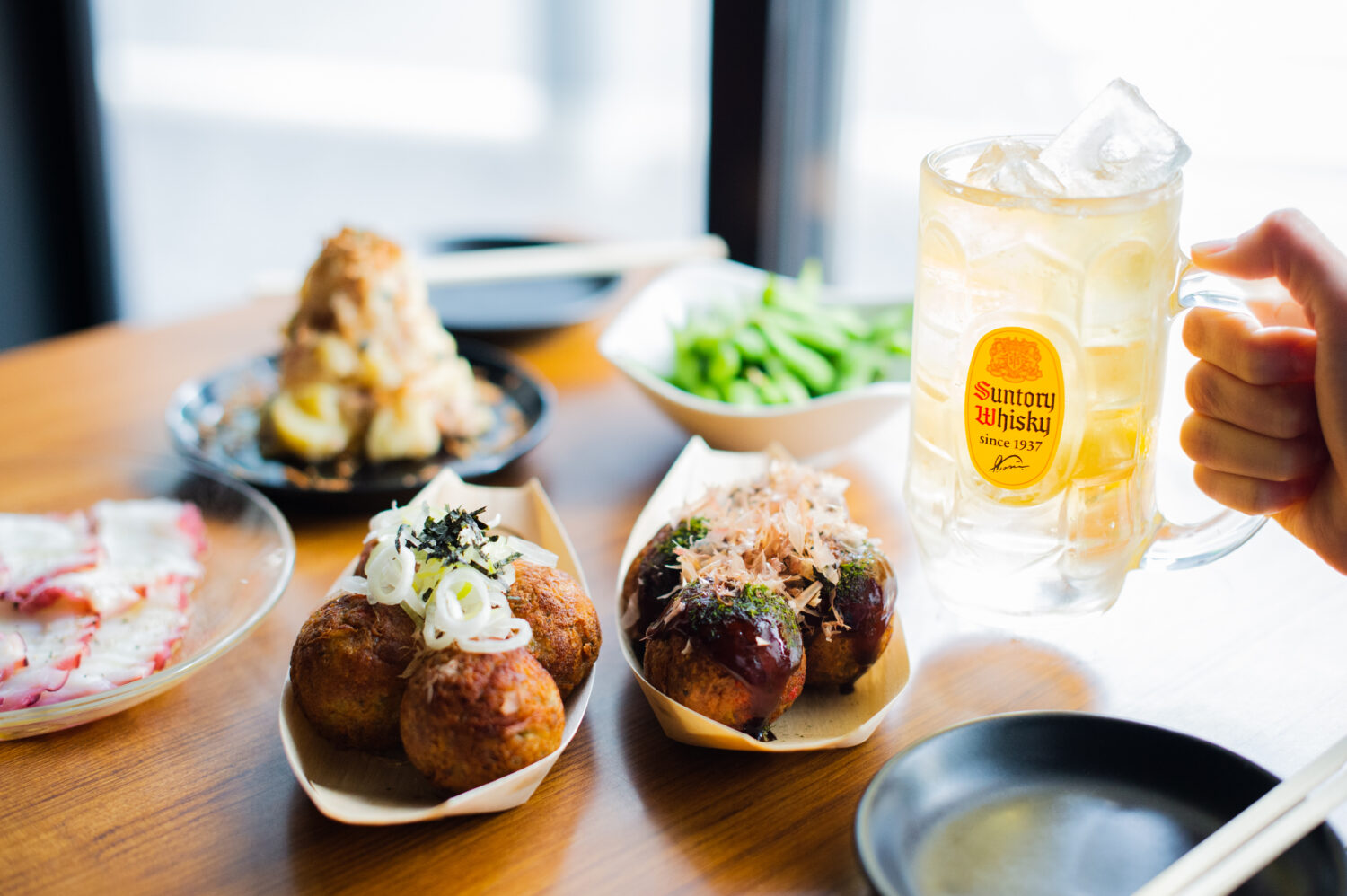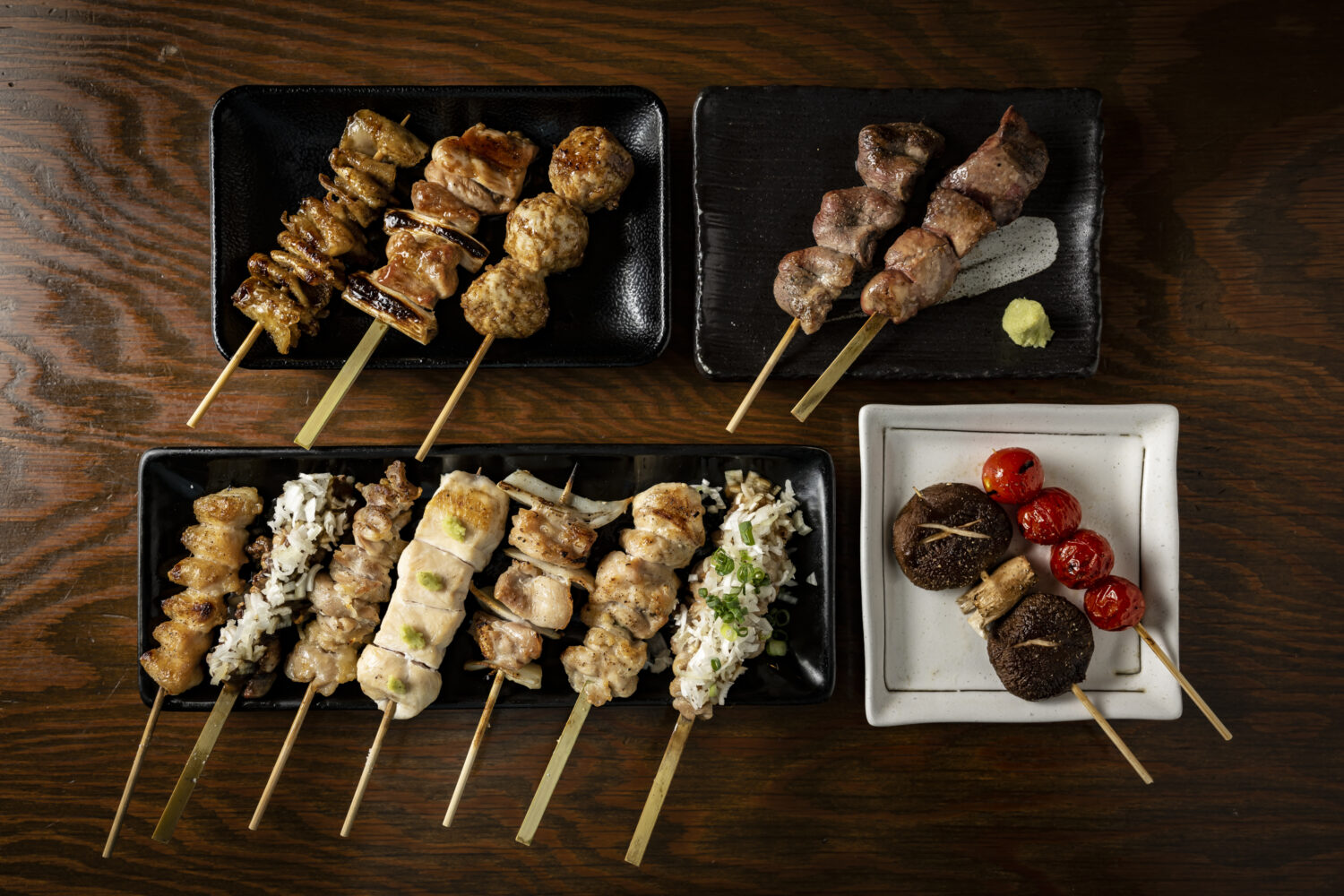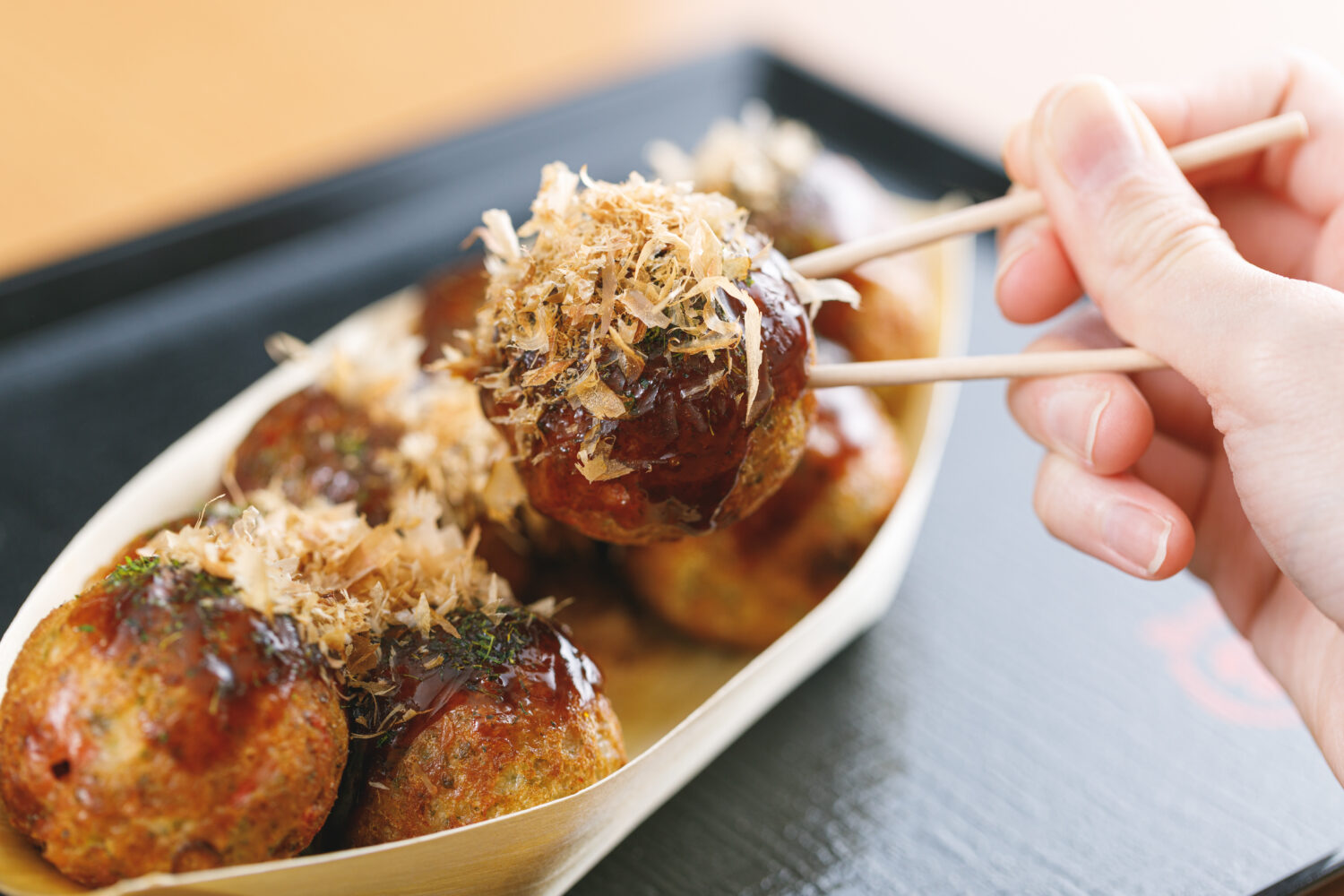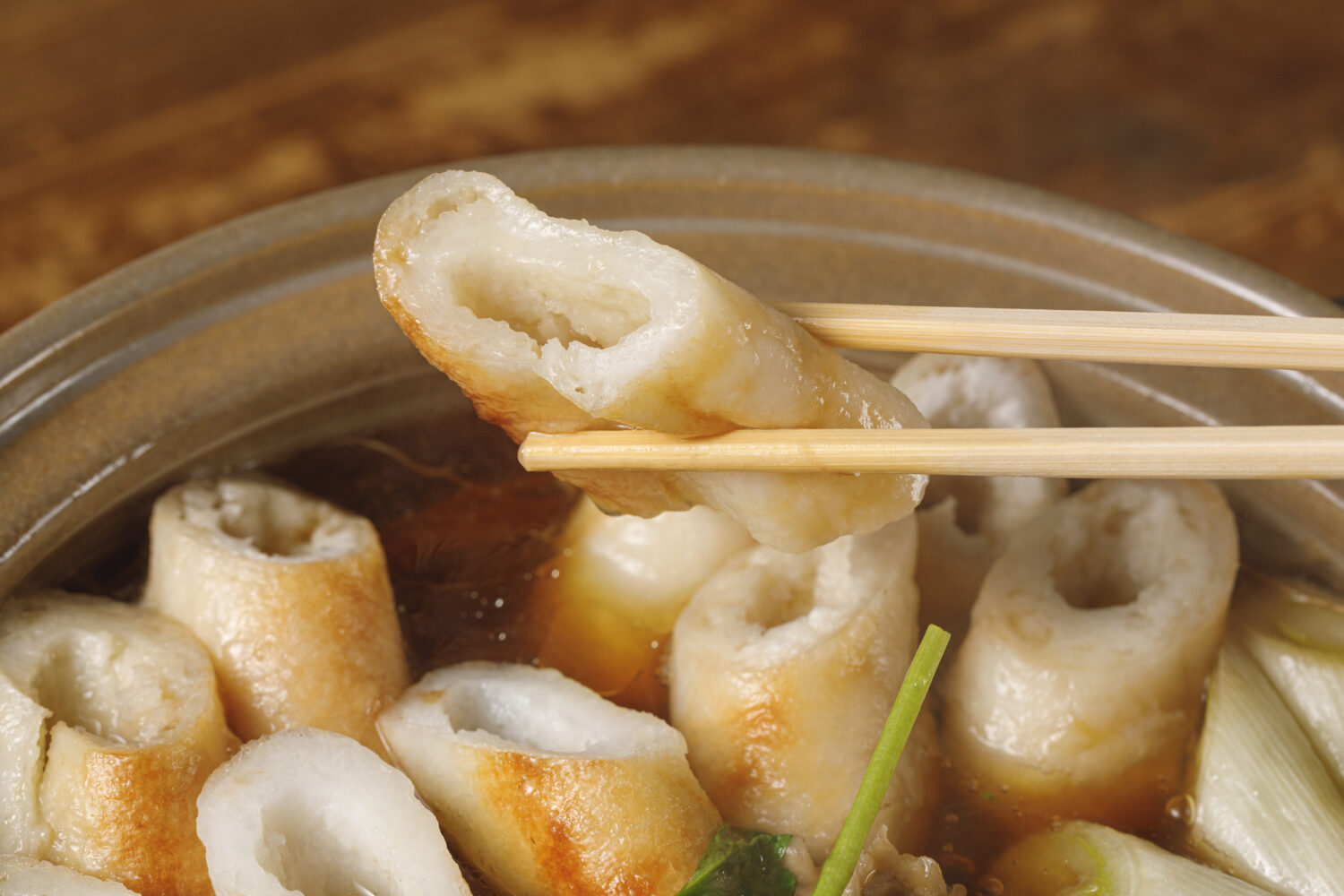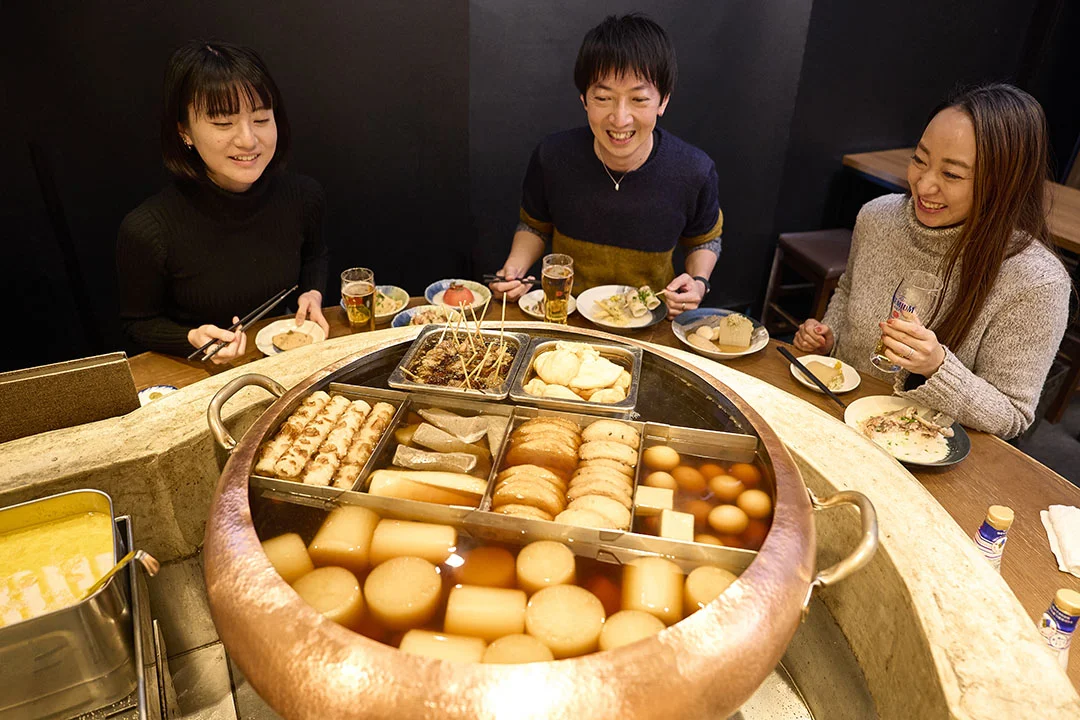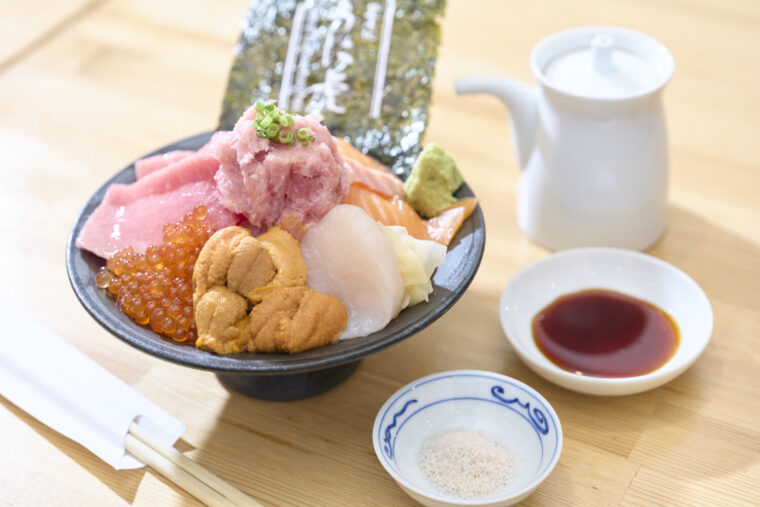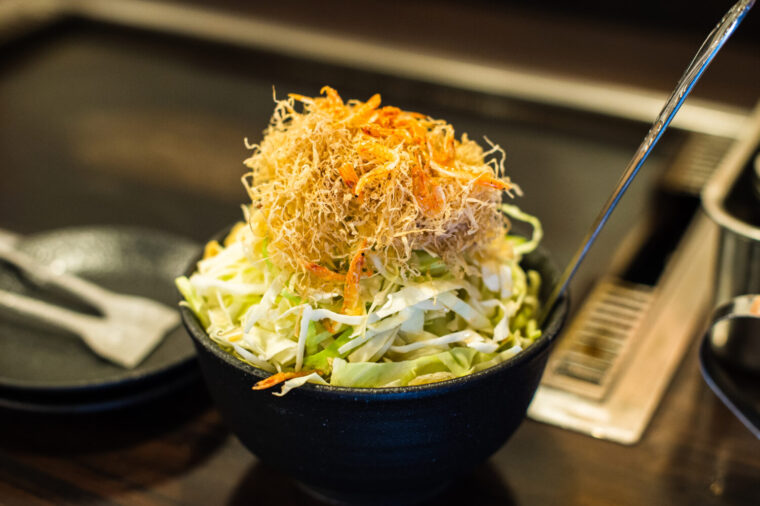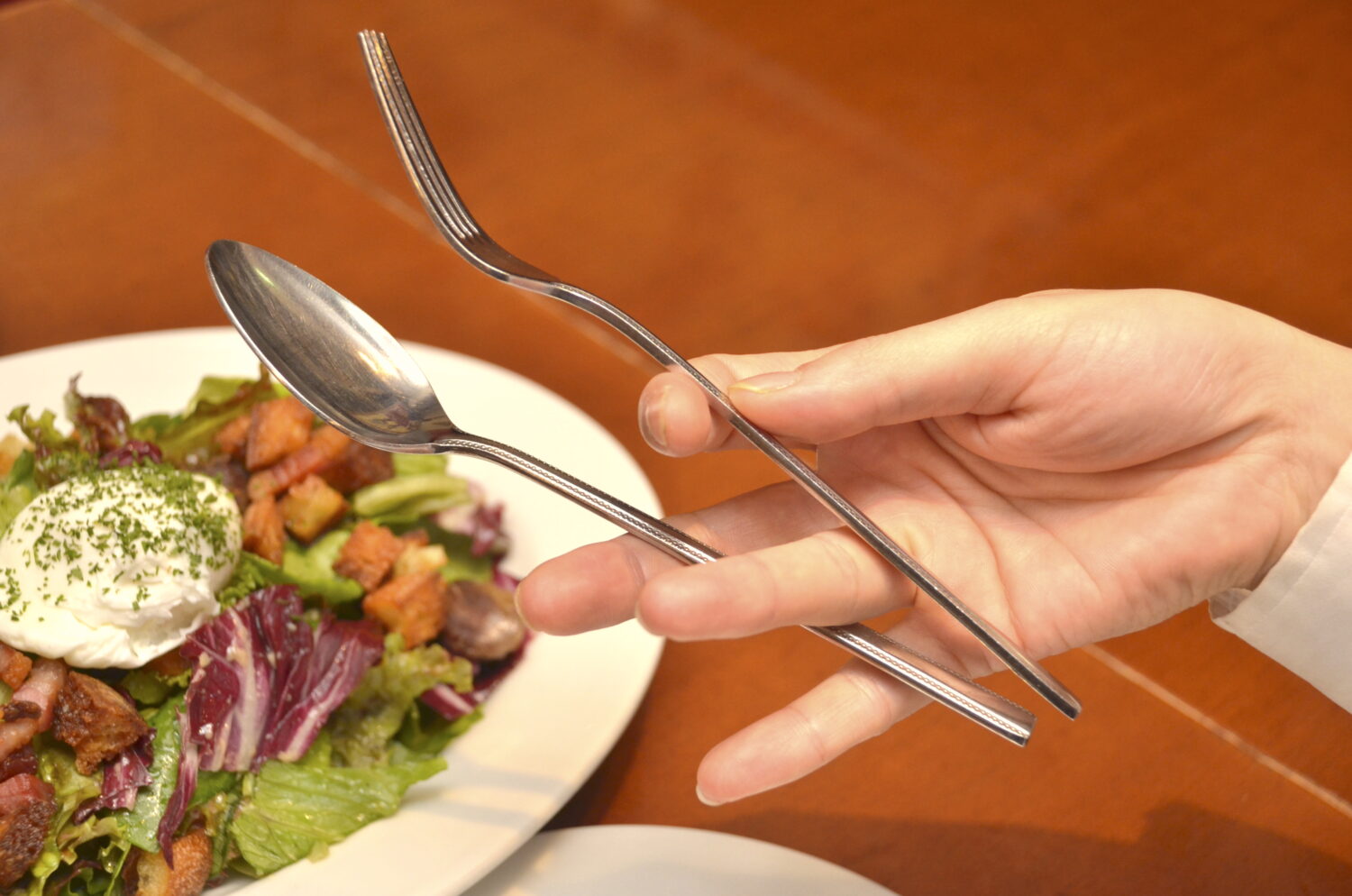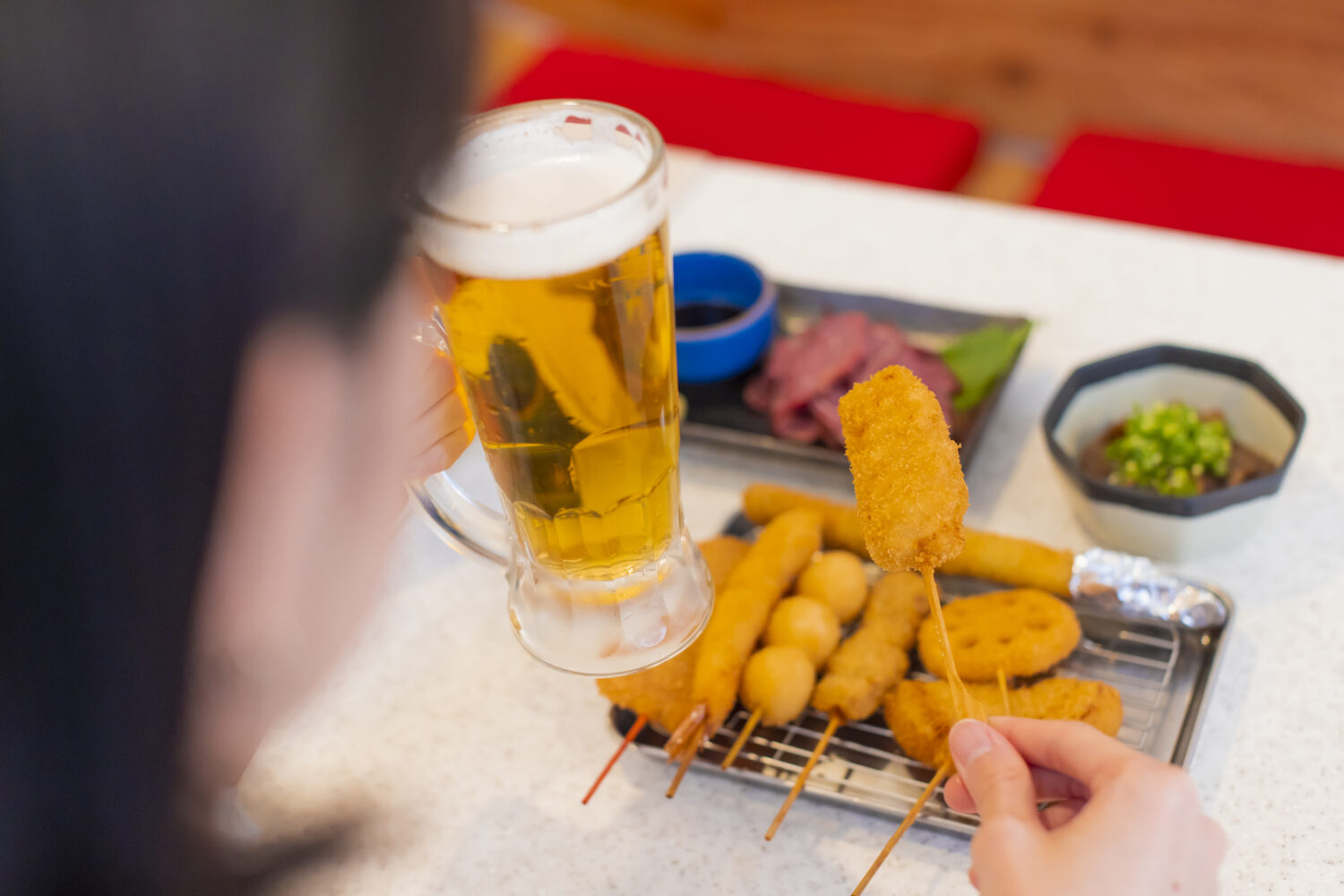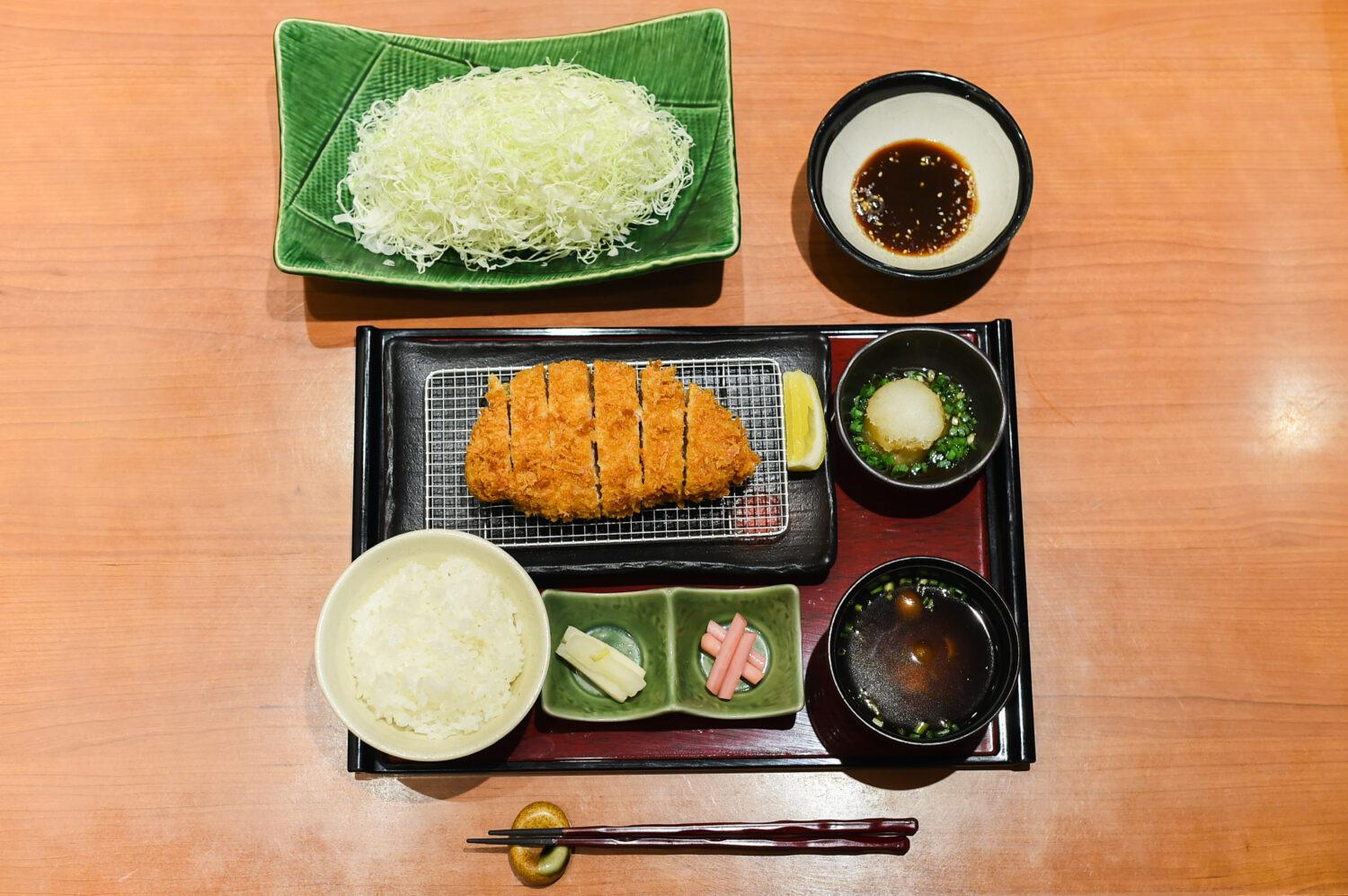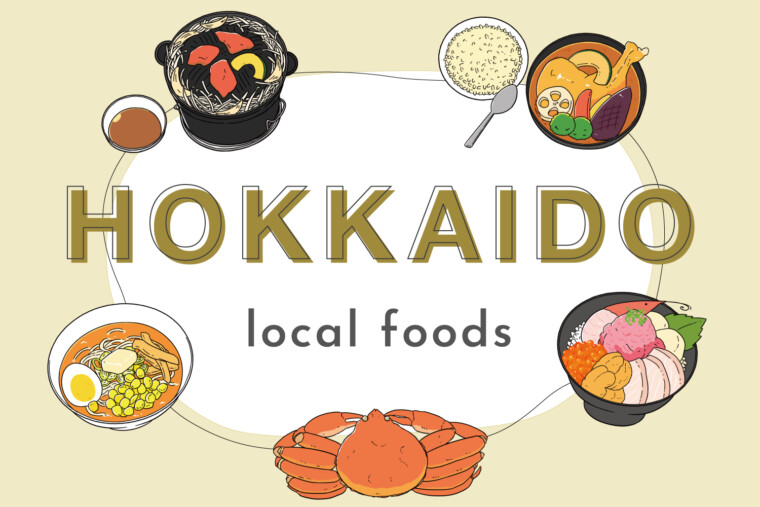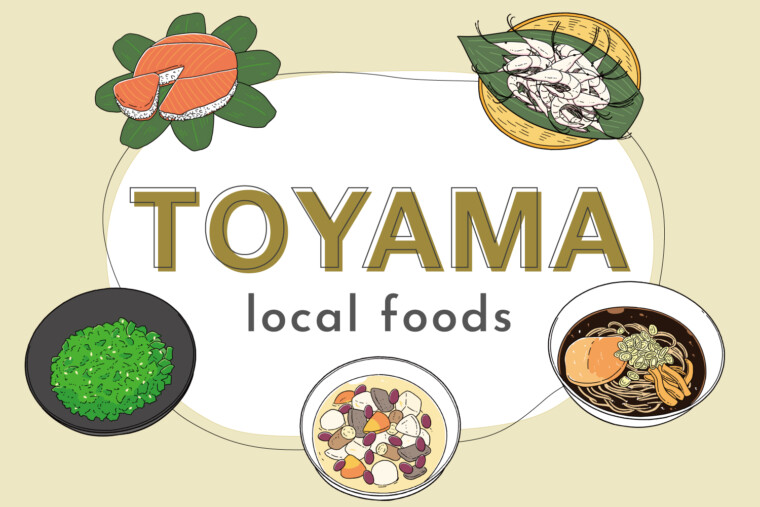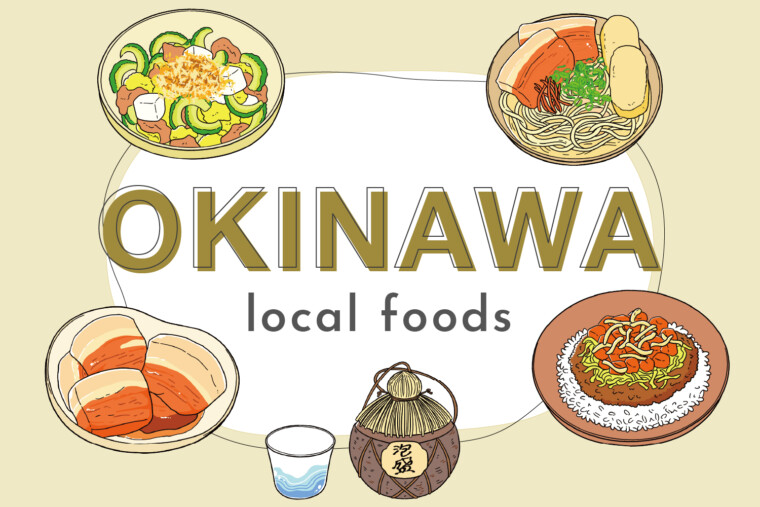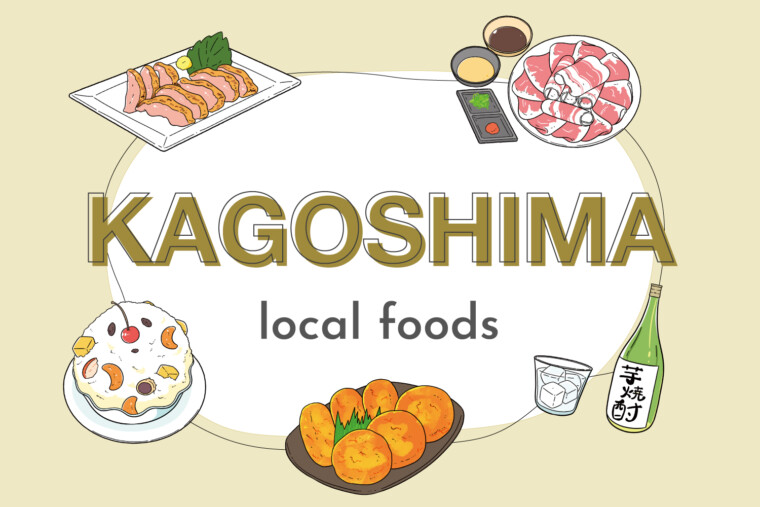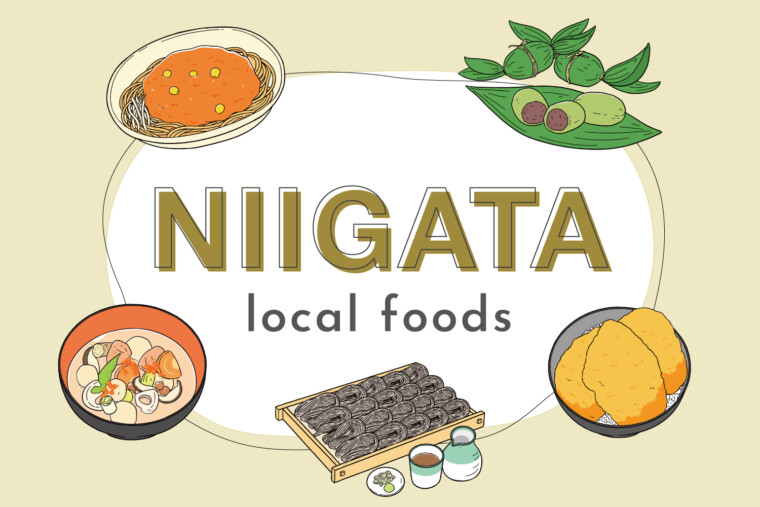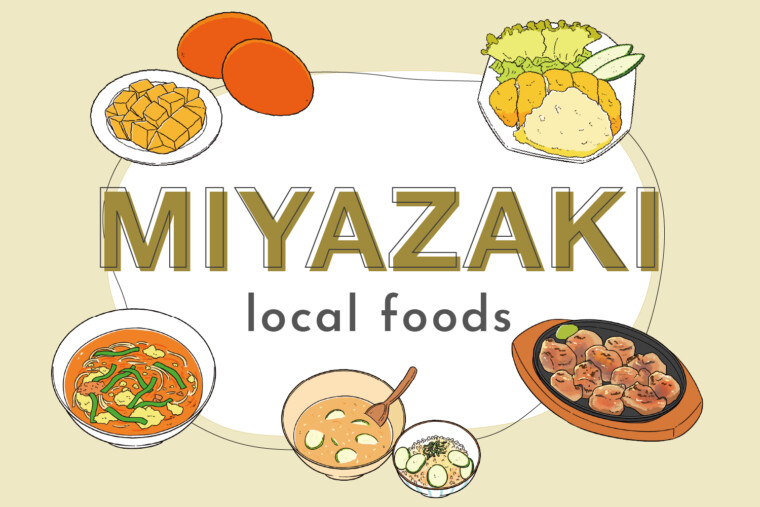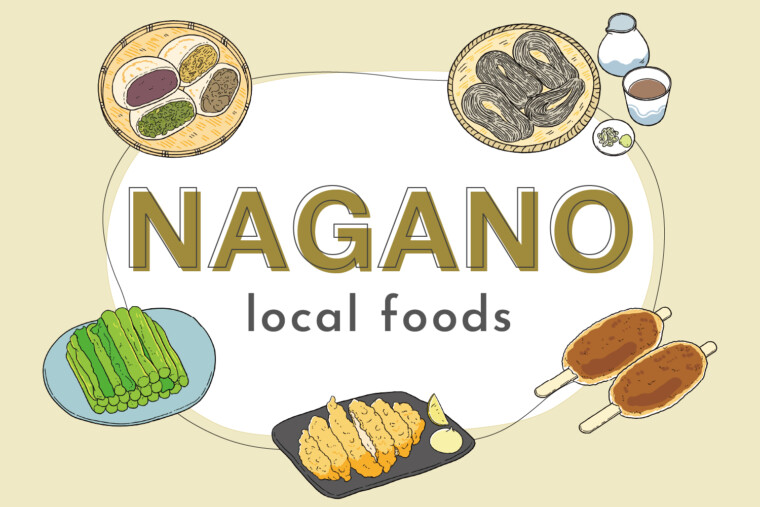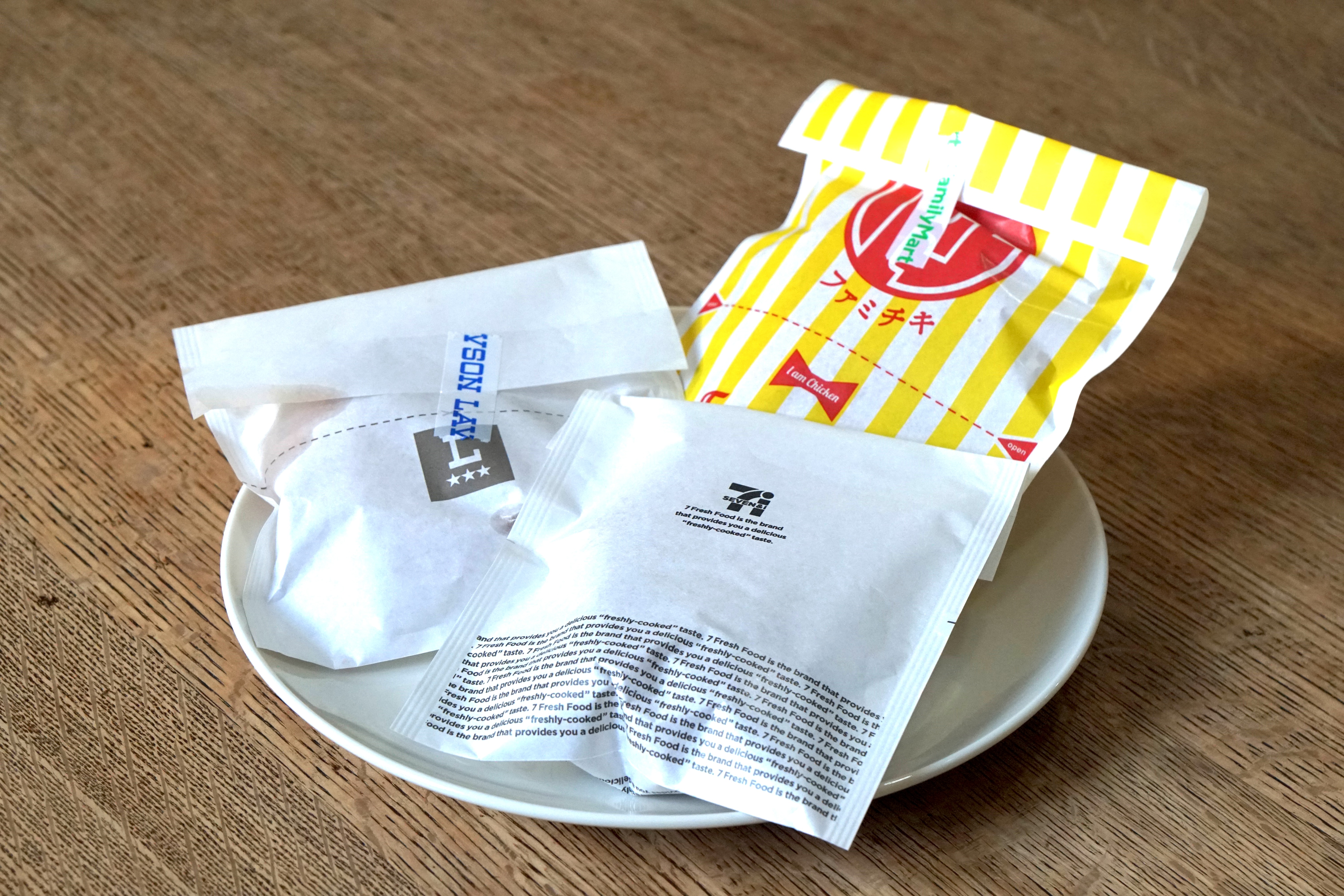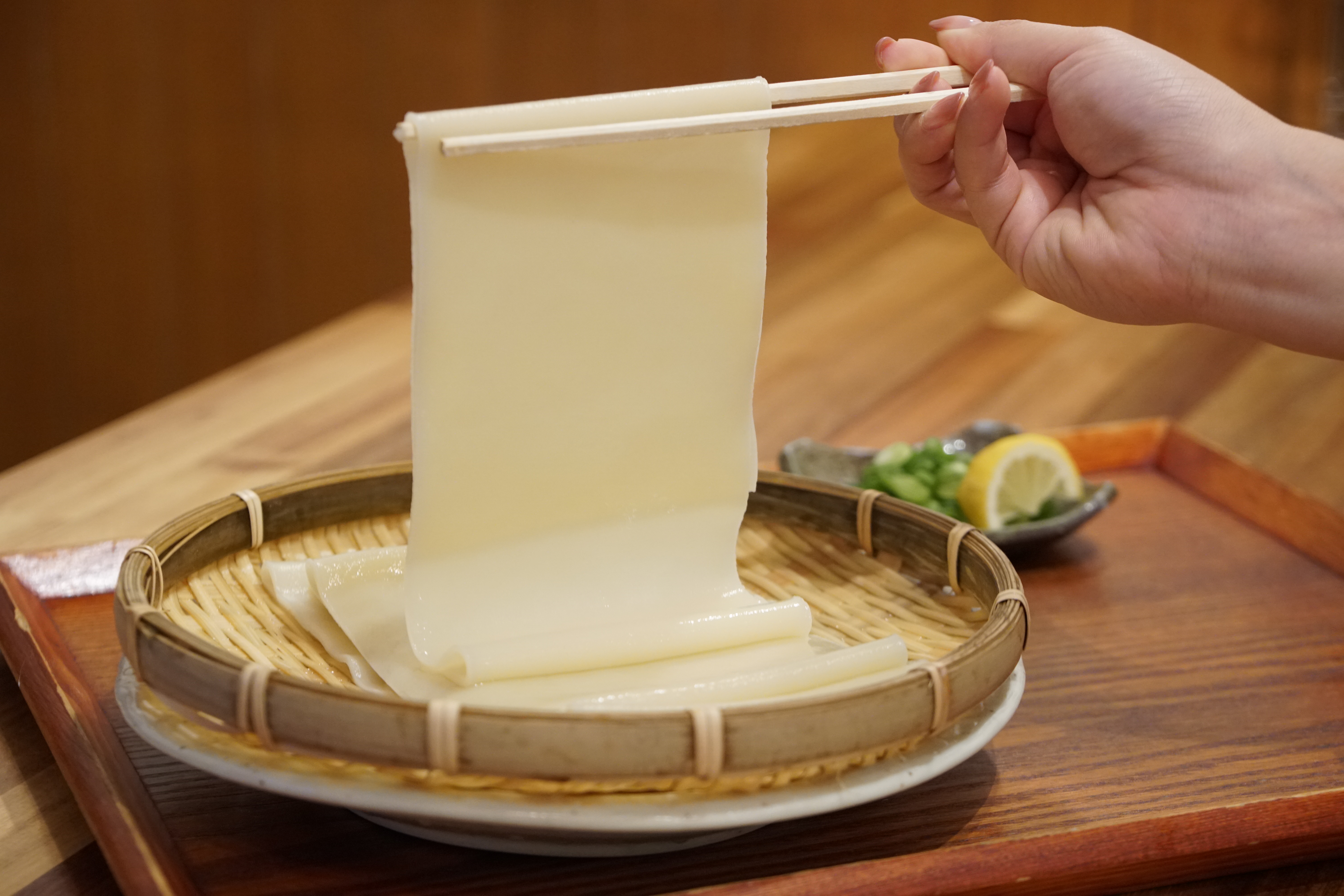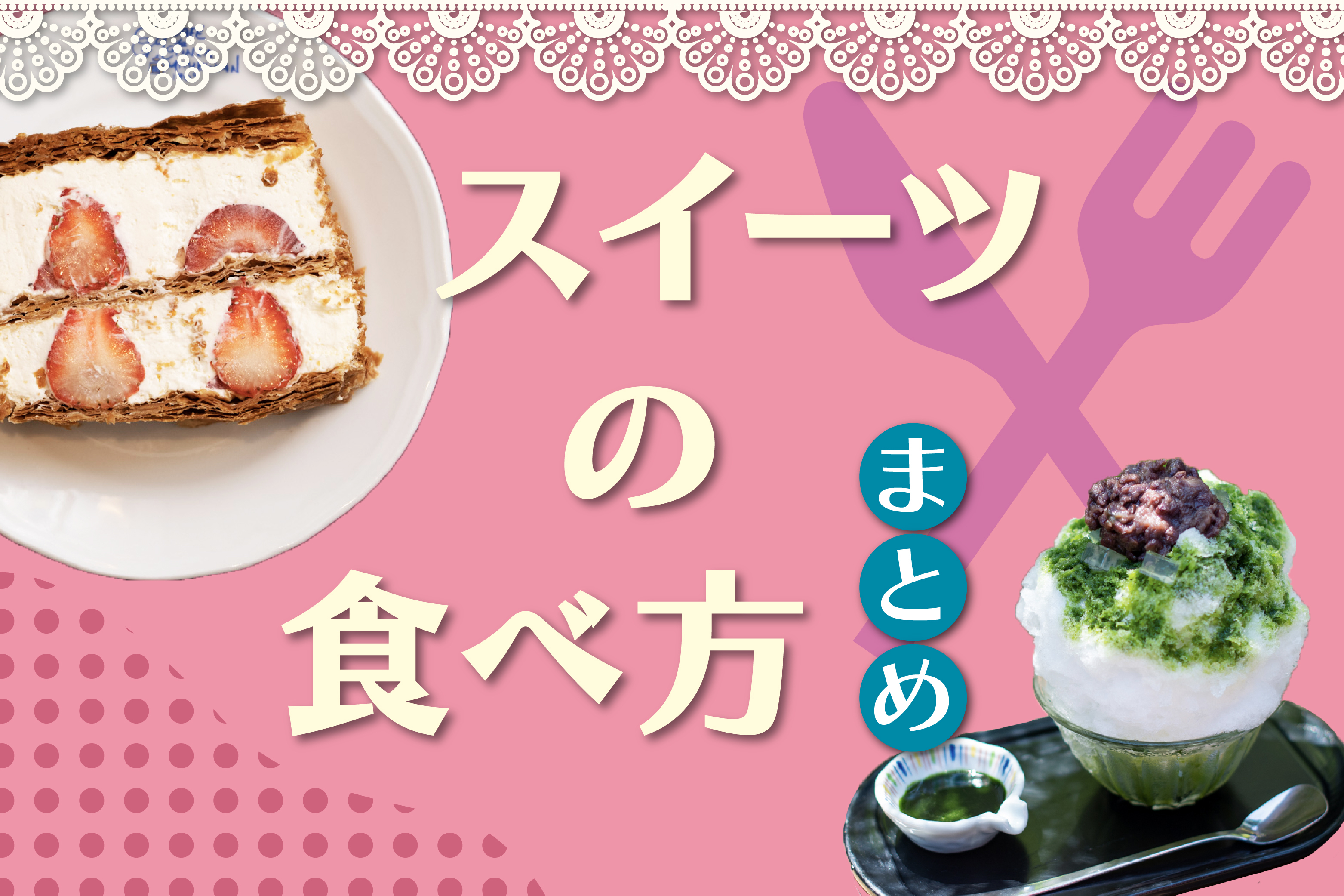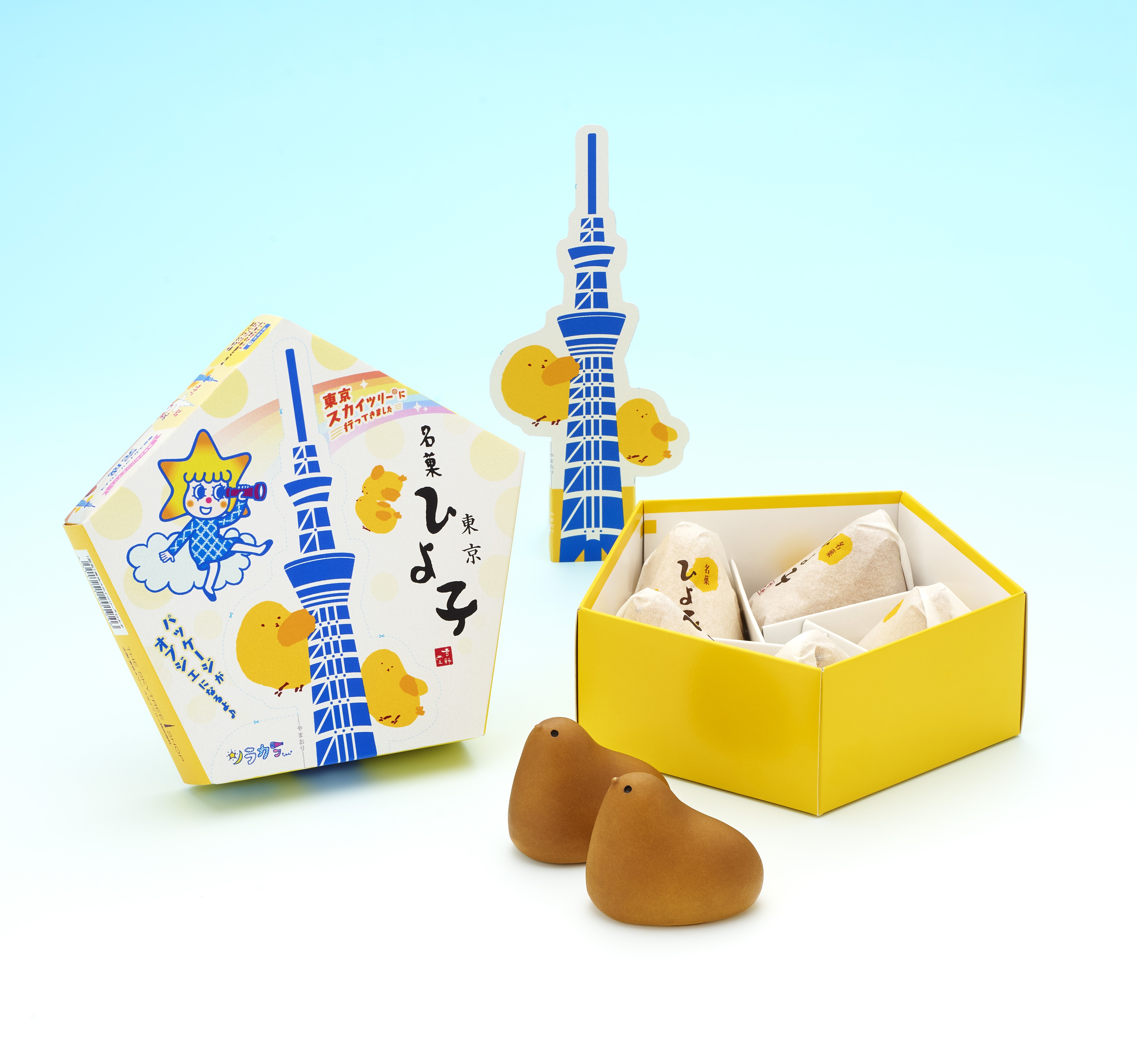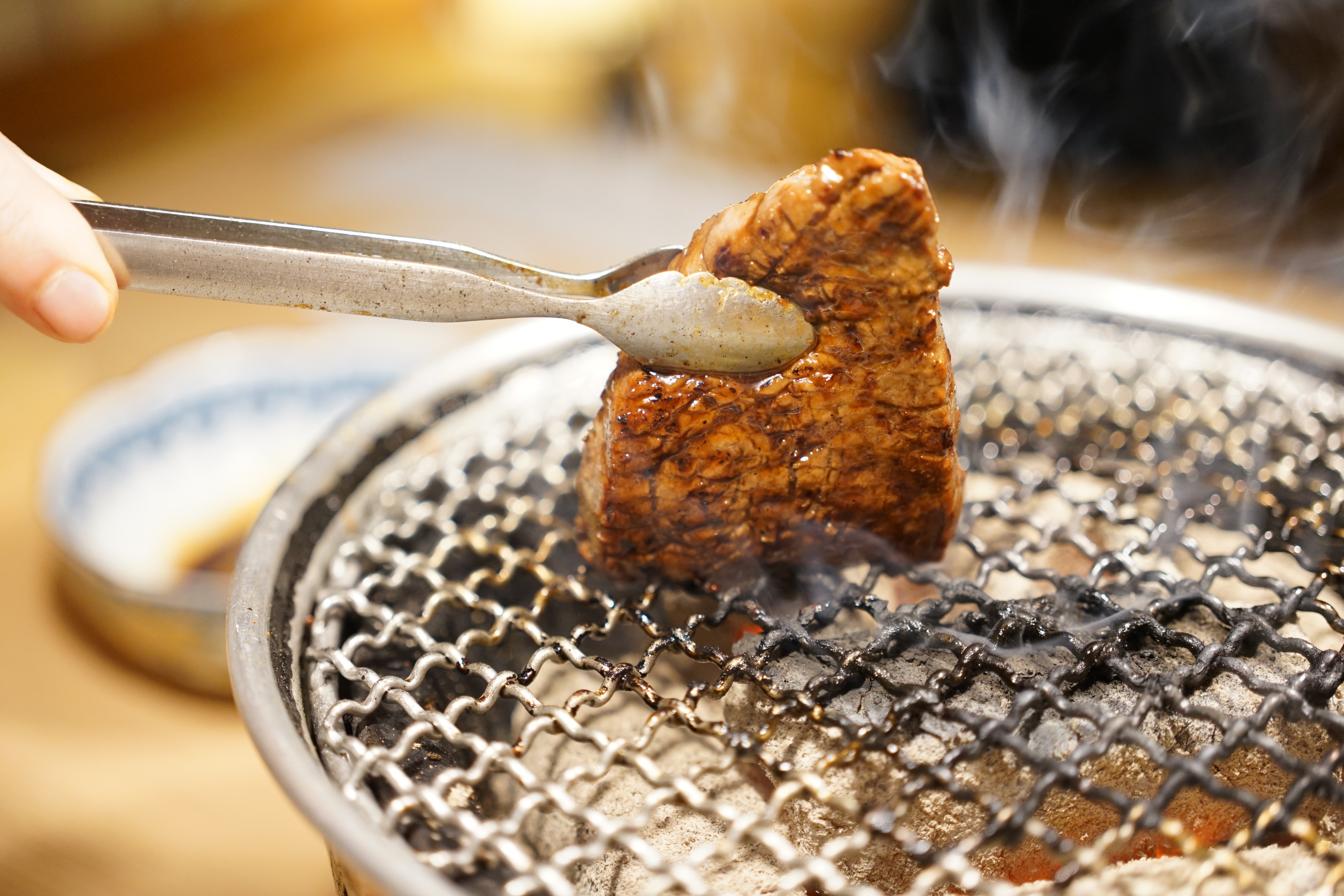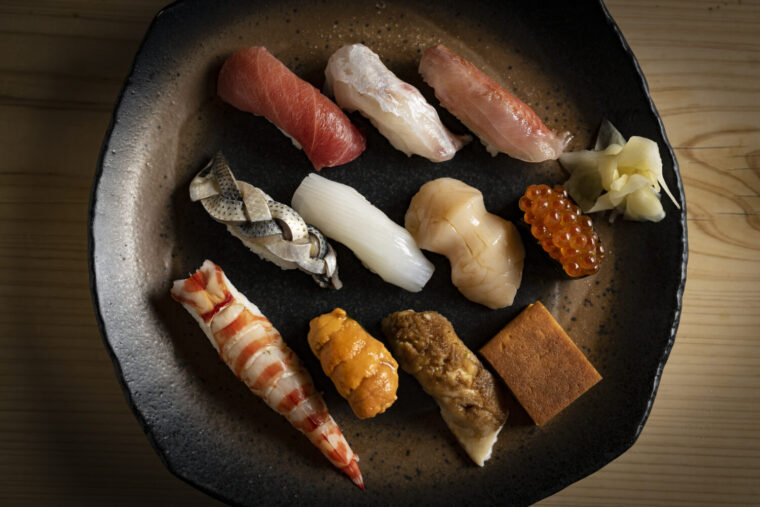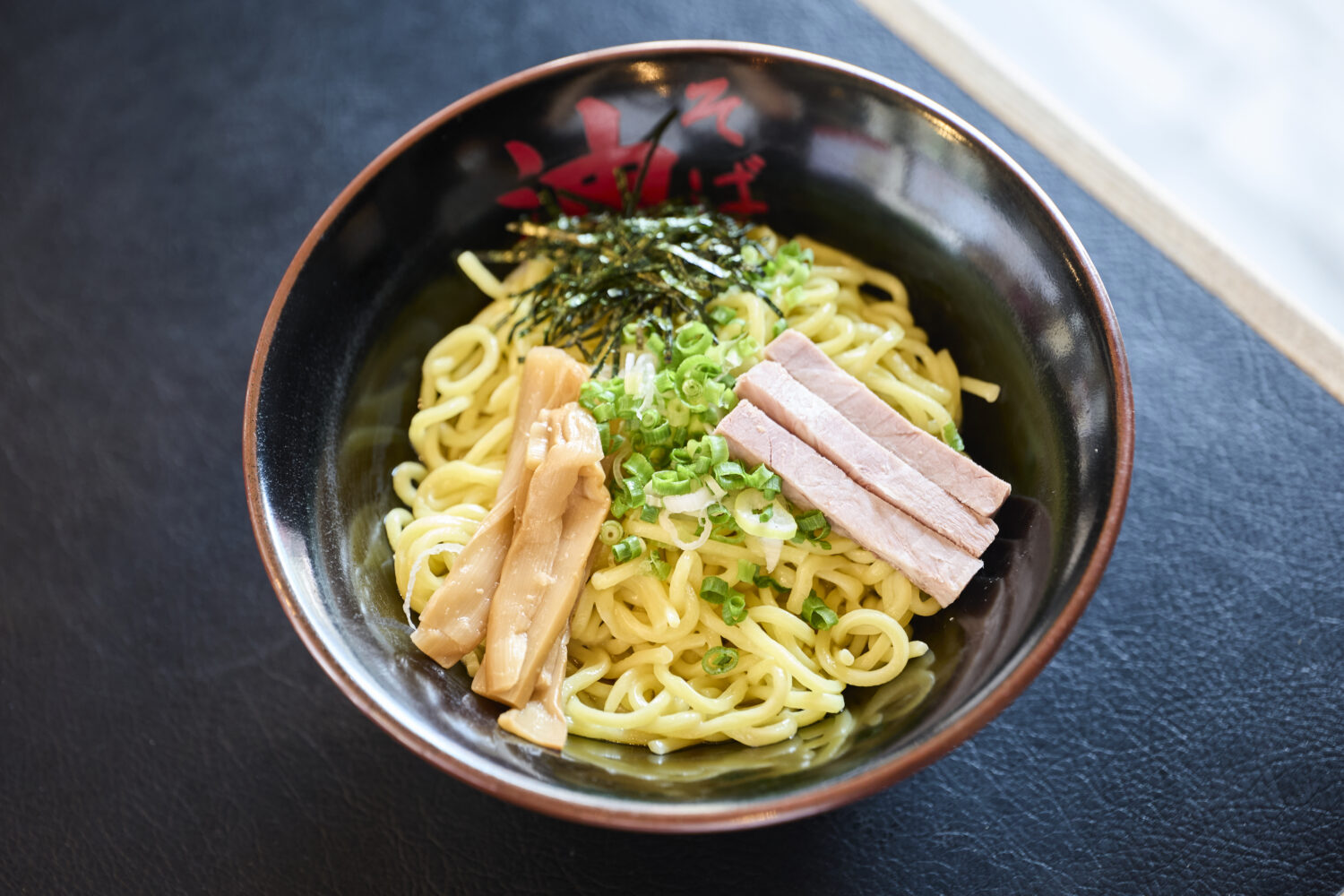
How to eat abura-soba | Start with two swirls around the bowl of vinegar and chili oil!
Abura soba is a local noodle dish originating from Tokyo. Instead of being served in a soup, the noodles are coated in a tare (base sauce) and abura (oil) mixture – in other words, a “soupless noodle”. Nowadays, abura soba can be found on the menus of ramen restaurants throughout Japan. Its inspiration is thought to be the Chinese dish cong you ban mian, also known as scallion oil noodles, which was specially adapted in Tokyo. This time, we’ve visited Tokyo Aburagumi Souhonten for an initiation into the art of abura soba!
share:
Table of Contents
Start by adding two swirls around the bowl of both su (vinegar) and rayu (chili oil)

We’ve started by ordering the house favorite, abura soba nami-mori (regular size). The dish features rather thick chukamen (ramen-like Chinese-style wheat noodles) topped with chashu (roast pork), menma (fermented bamboo shoots), negi (spring onion), and kizami-nori (thin strips of nori seaweed). As served, it looks absolutely delicious, however, before we eat, let’s learn more about the customary style of enjoying abura soba.
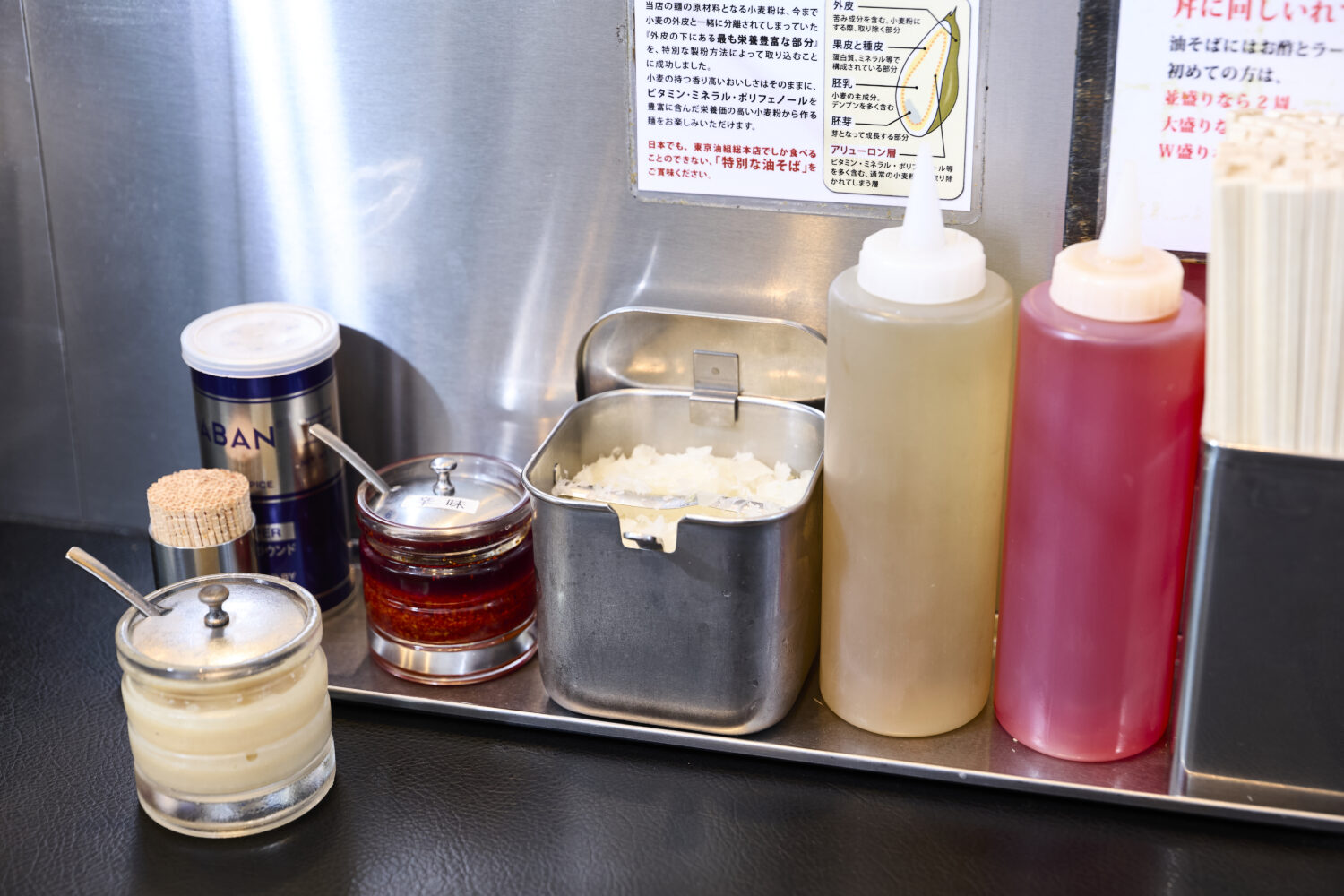
You’ll see two bottles on the counter. The left bottle contains su (vinegar), and the right bottle contains rayu (chili oil). In addition, kizami tamanegi (shredded onion, in this case, round white onion) is available as a complementary topping. And, after you enter the restaurant and order, the suri-ninniku (garlic paste) pictured at the front left will be brought out for you, also free of charge.
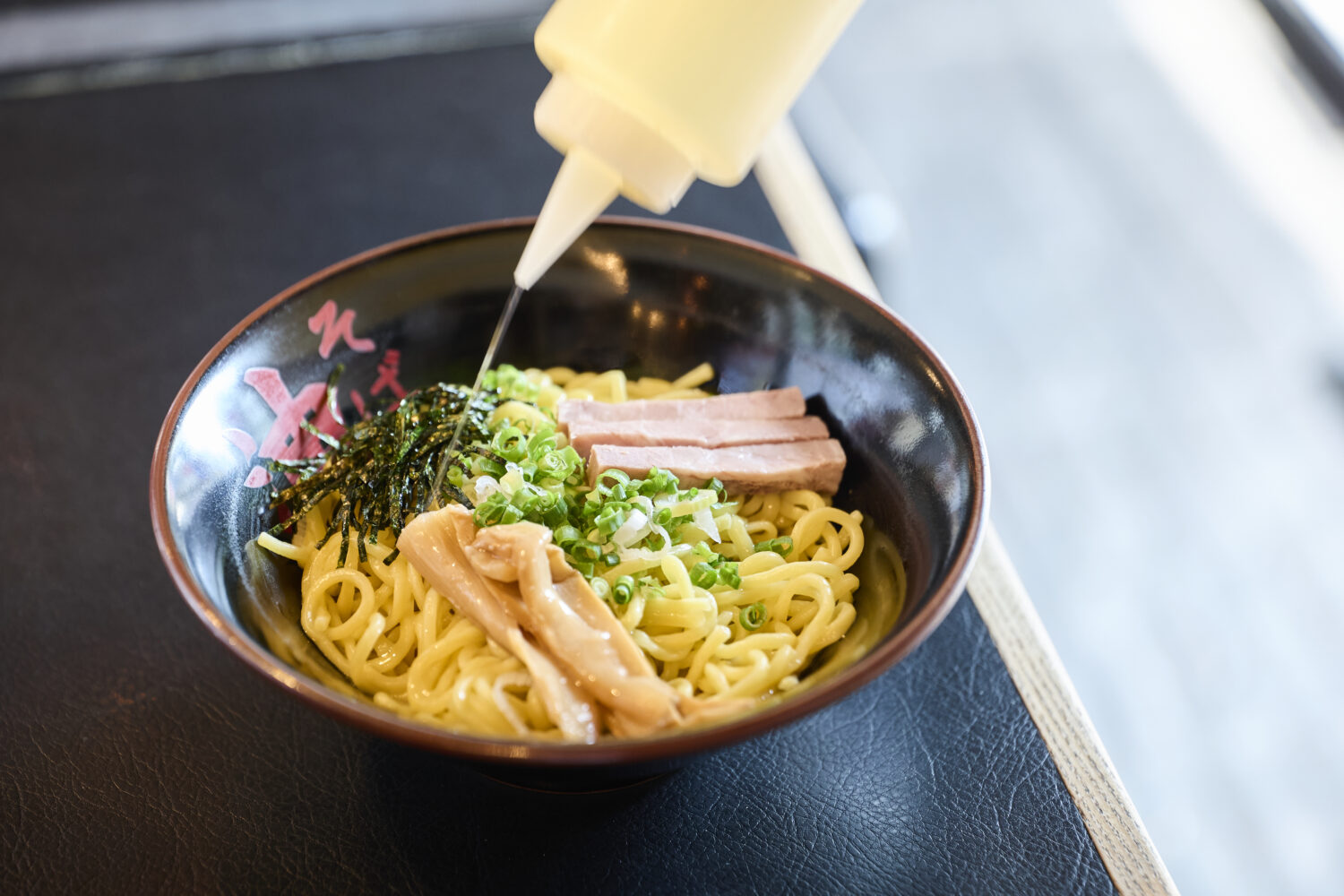
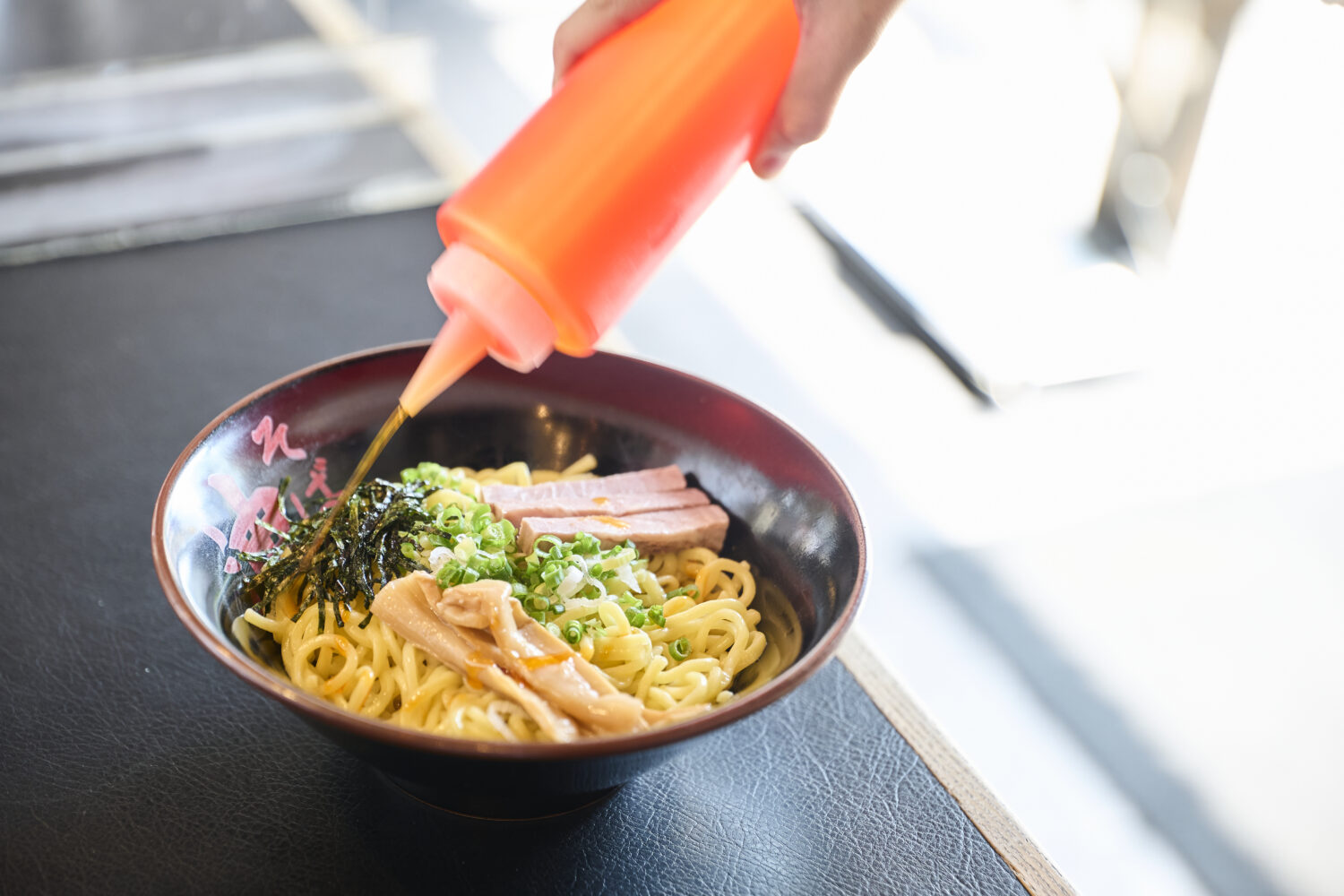
Start by adding the provided vinegar and chili oil, using about enough to swirl across the noodles twice for each condiment. If you’ve ordered oh-mori (large serving), you’ll want to make about three swirls, and for the daburu-mori (double serving, often indicated with the letter “W”), you should go around the bowl about four times.
Mix while still hot
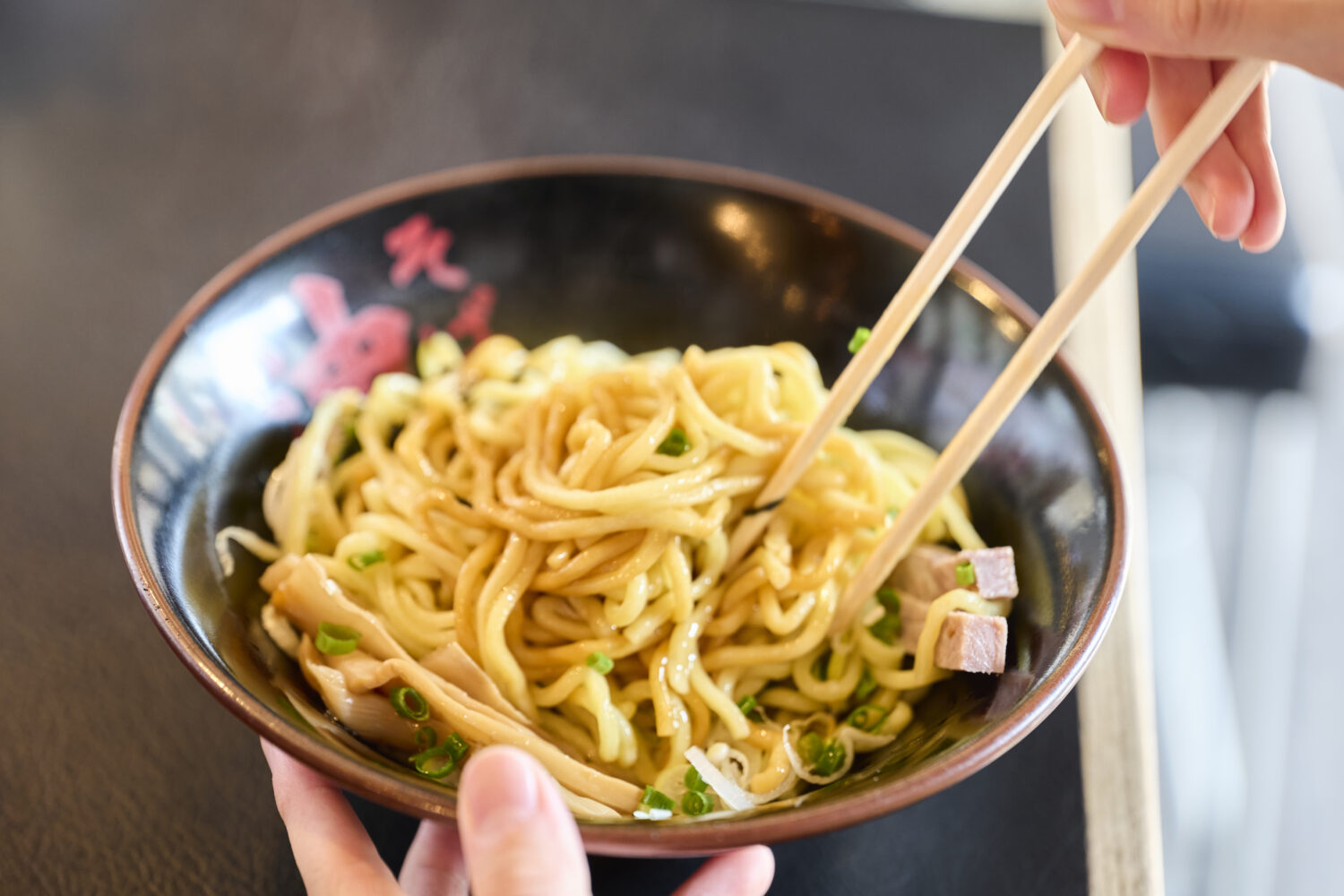
Mix up the dish while the noodles are still hot. Make sure that the shoyu-dare (soy-based sauce) and oil below the noodles are evenly distributed.
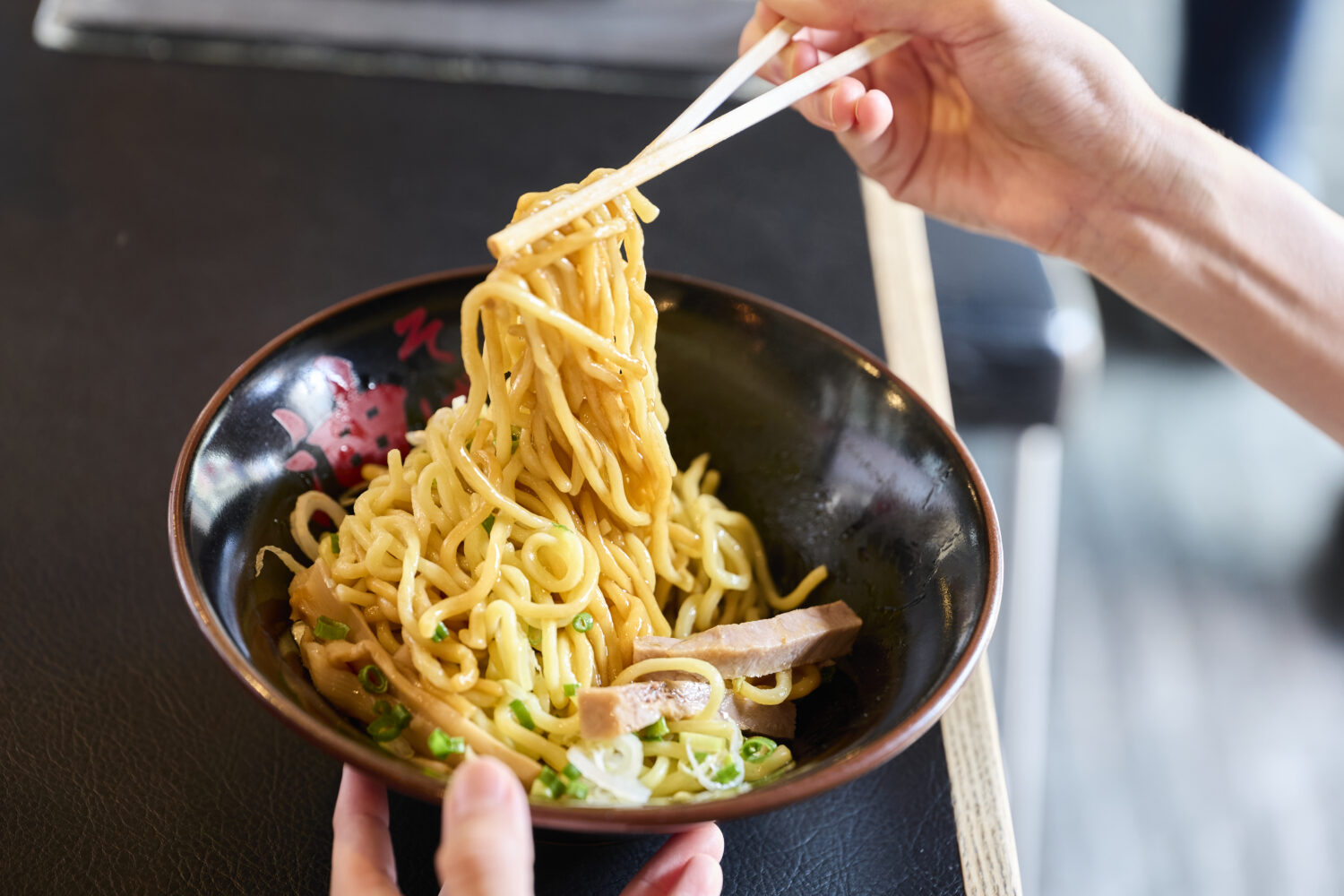
Now for the first bite. Let’s savor the concentrated flavor of the soy-based sauce just as it is.
Top with shredded onion
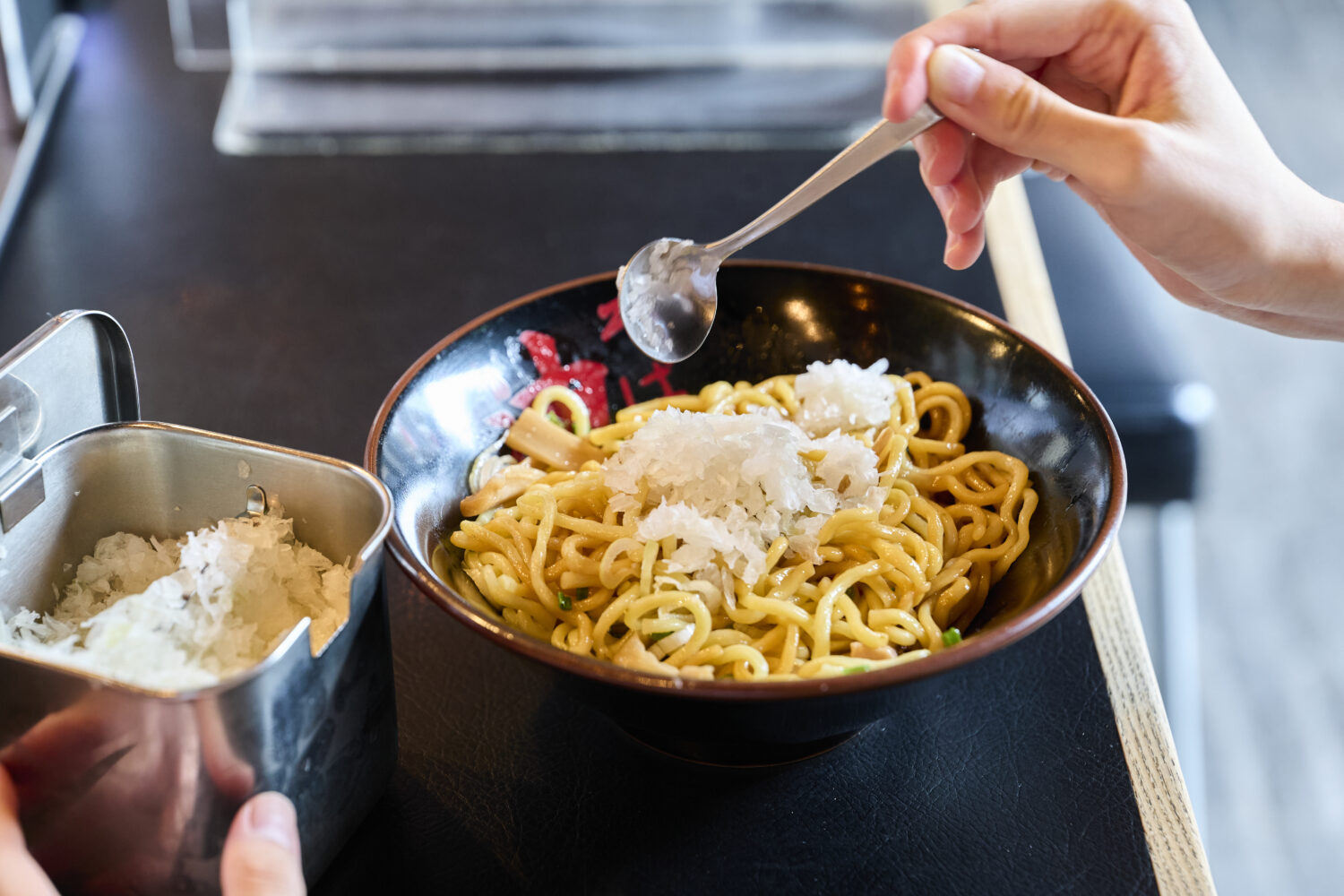
After enjoying the first bite, let’s start customizing our bowl. Try topping with some of the complimentary shredded onion. The pungency of the onion is a perfect match for the richness of this dish. If you don’t care for onions, you can skip this step.
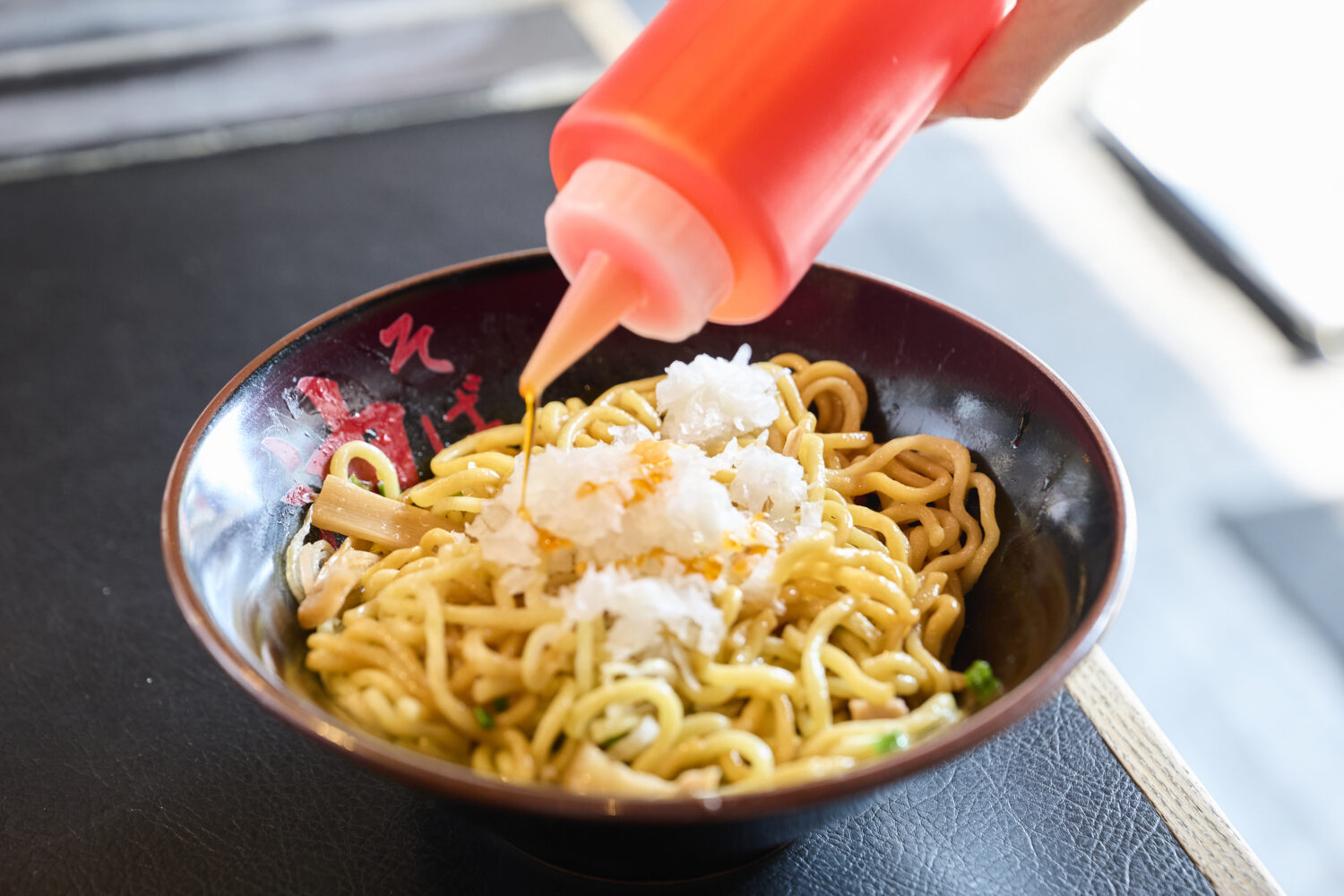
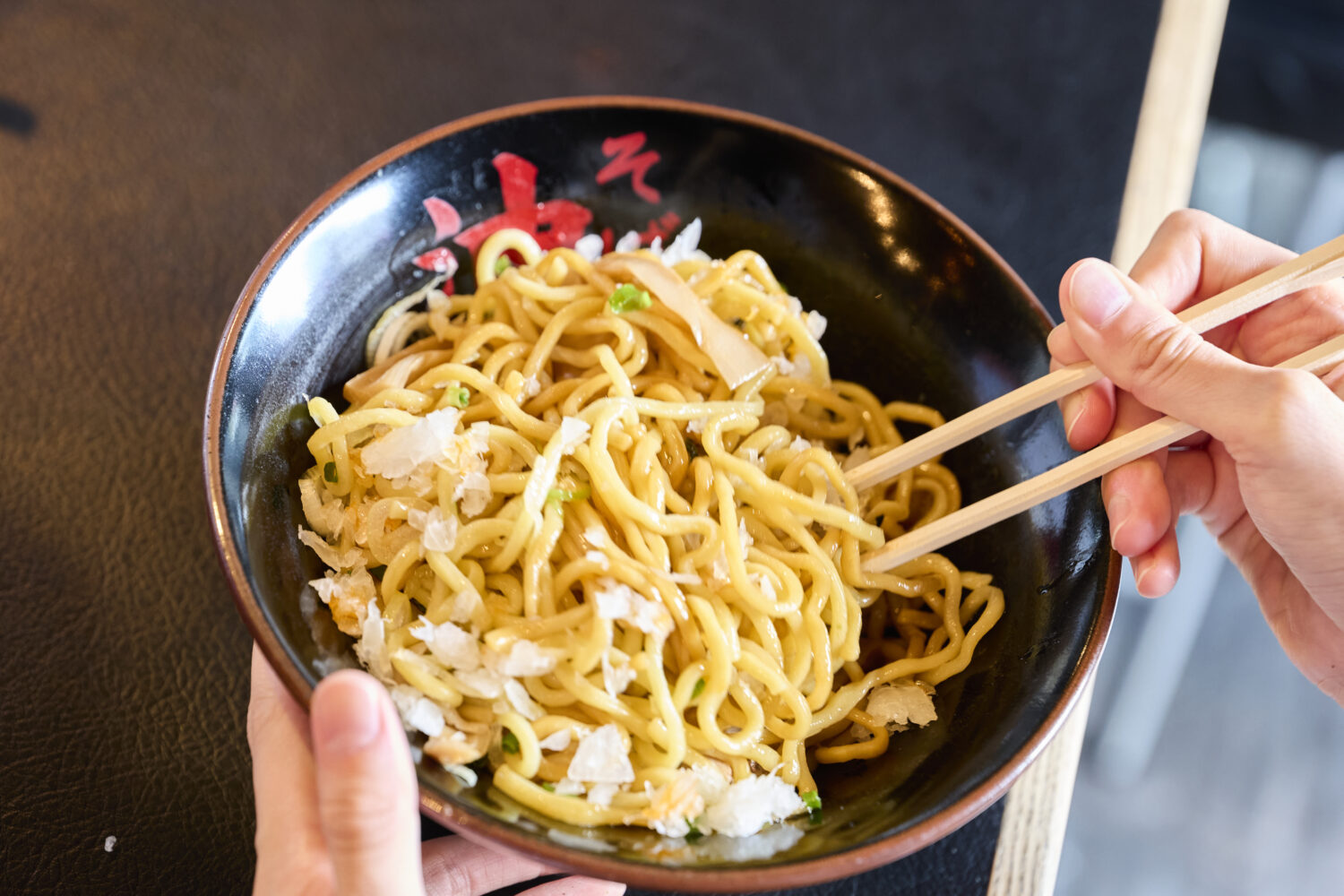
After topping with shredded onion, we recommend adding more chili oil to your taste. Don’t forget to mix the noodles again after adding.
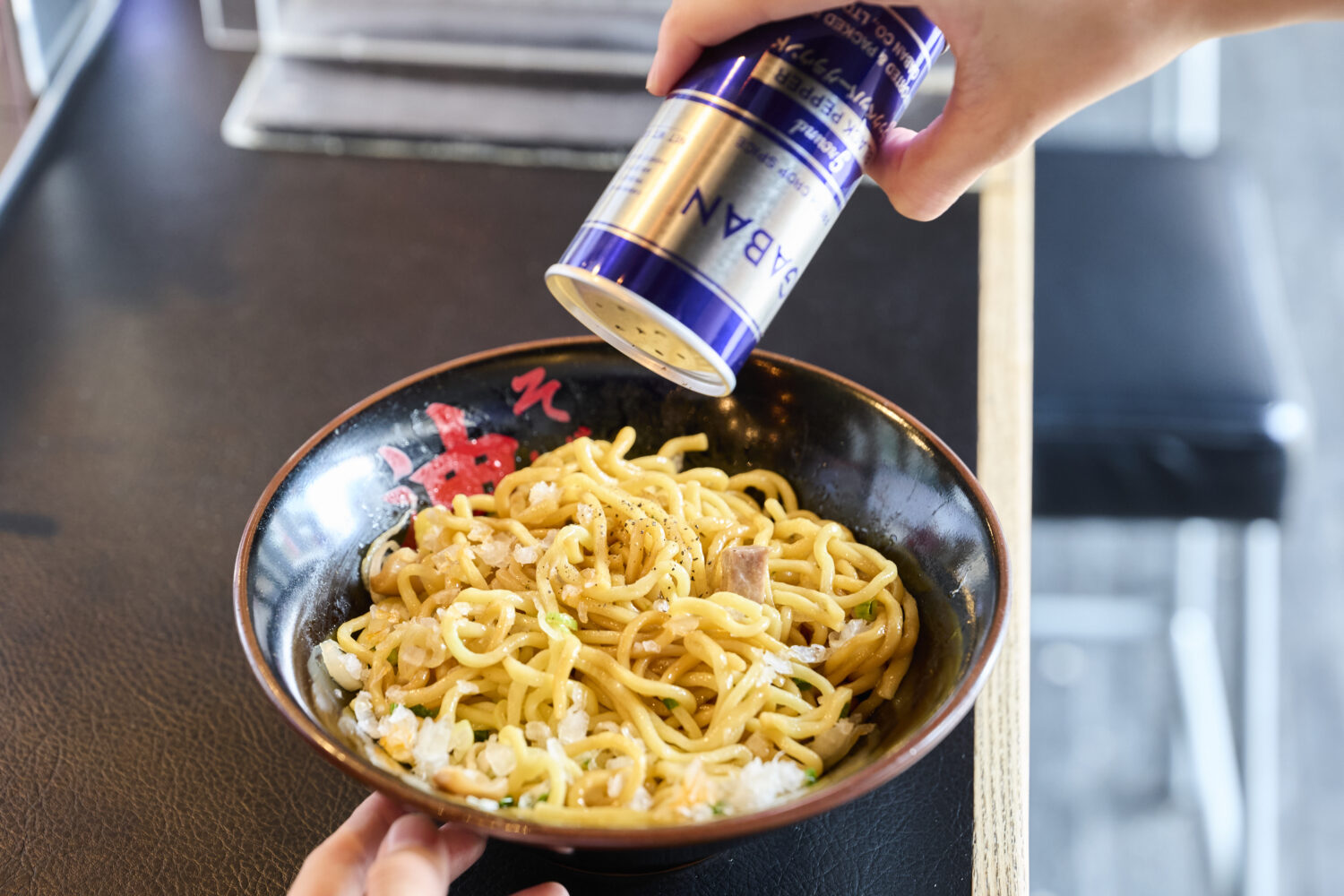
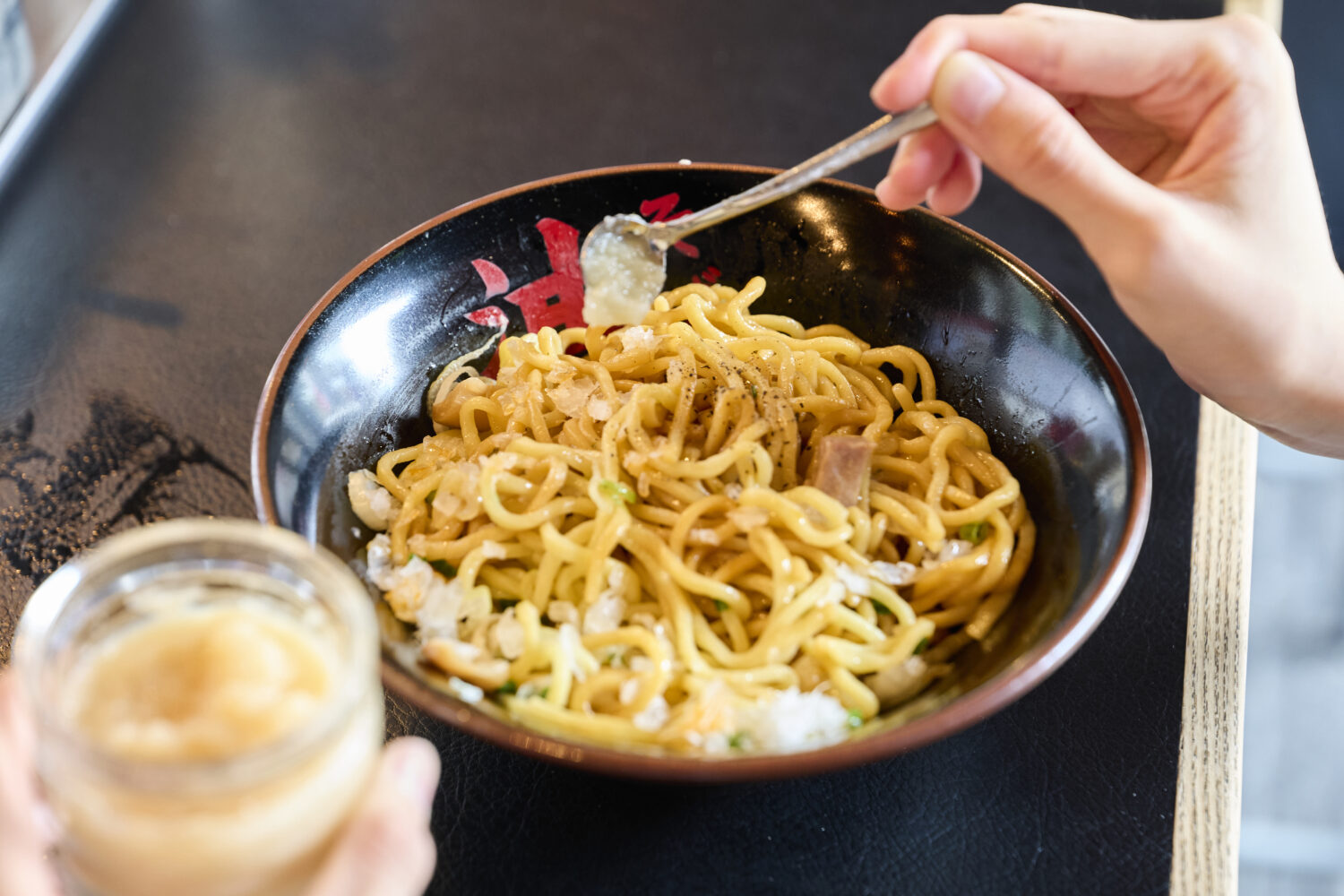
Now, build up flavor with your preference of condiments such as kosho (black pepper) and suri-ninniku (garlic paste). Add small amounts and taste as you go, to create your own original flavor.
Try toppings such as hanjuku tamago (soft-boiled egg) and cheese
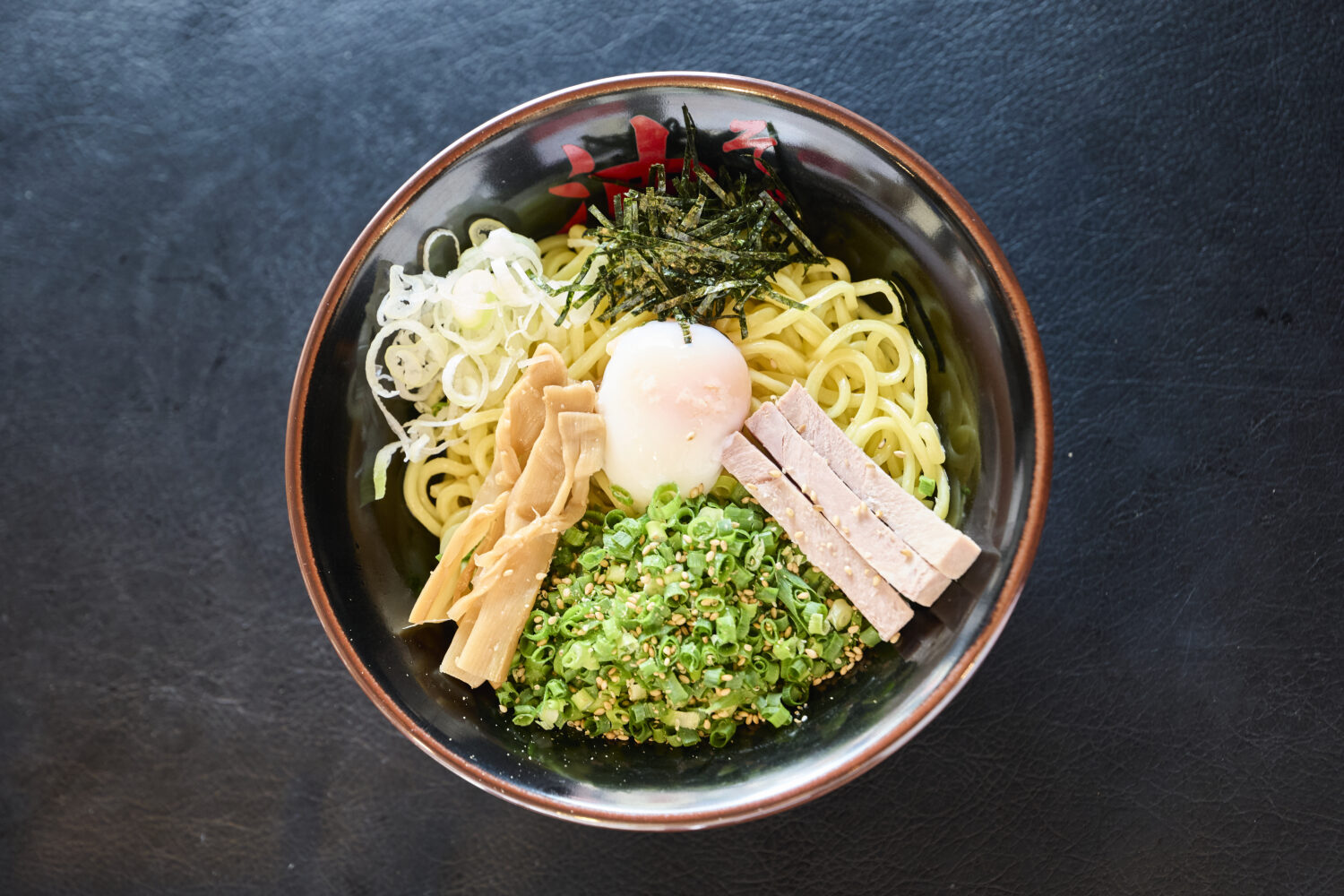
Next, let’s take a look at a favorite order of regular customers. This is “abura soba nami-mori” with special topping “A” – green onions seasoned with sesame oil and hanjuku tamago (soft-boiled egg).

Now, top with an order of parmesan cheese (at extra charge).
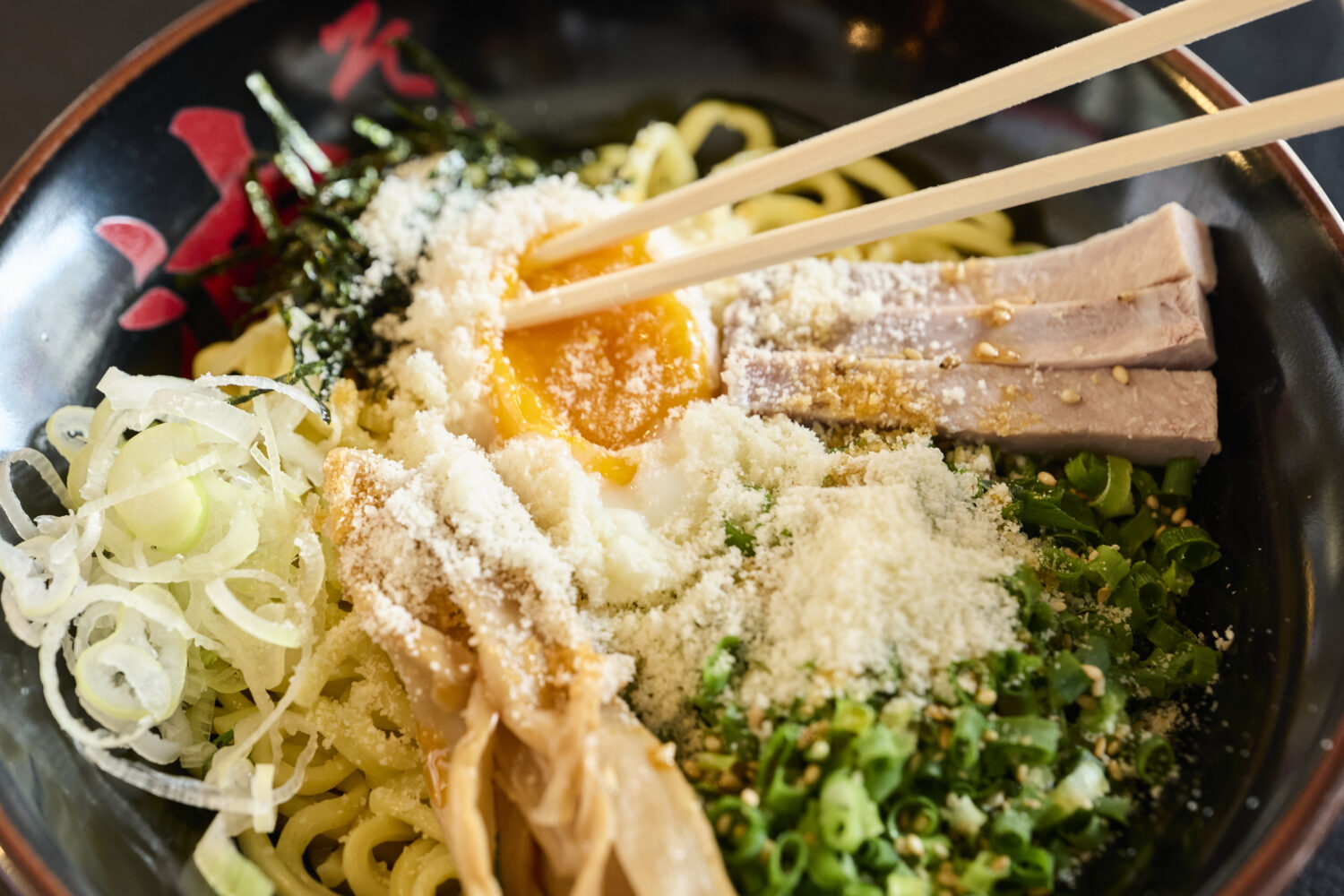
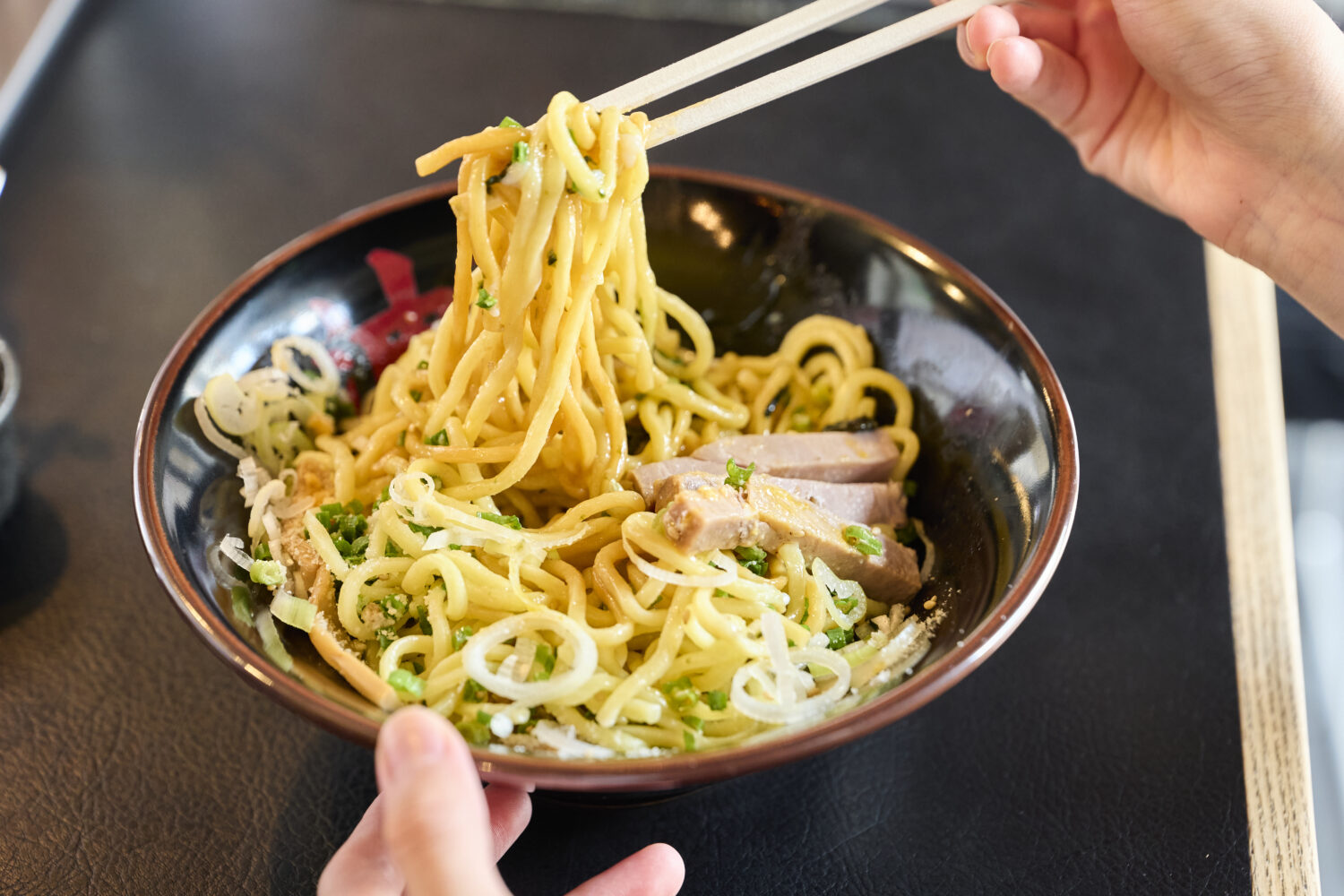
Break open the soft-boiled egg and decisively stir everything together. The egg yolk and cheese accentuate the savoriness of the soy-based sauce. You might call this invention a Japanese-style carbonara!
Tips for enjoying tsumami chashu (roast pork side dish)
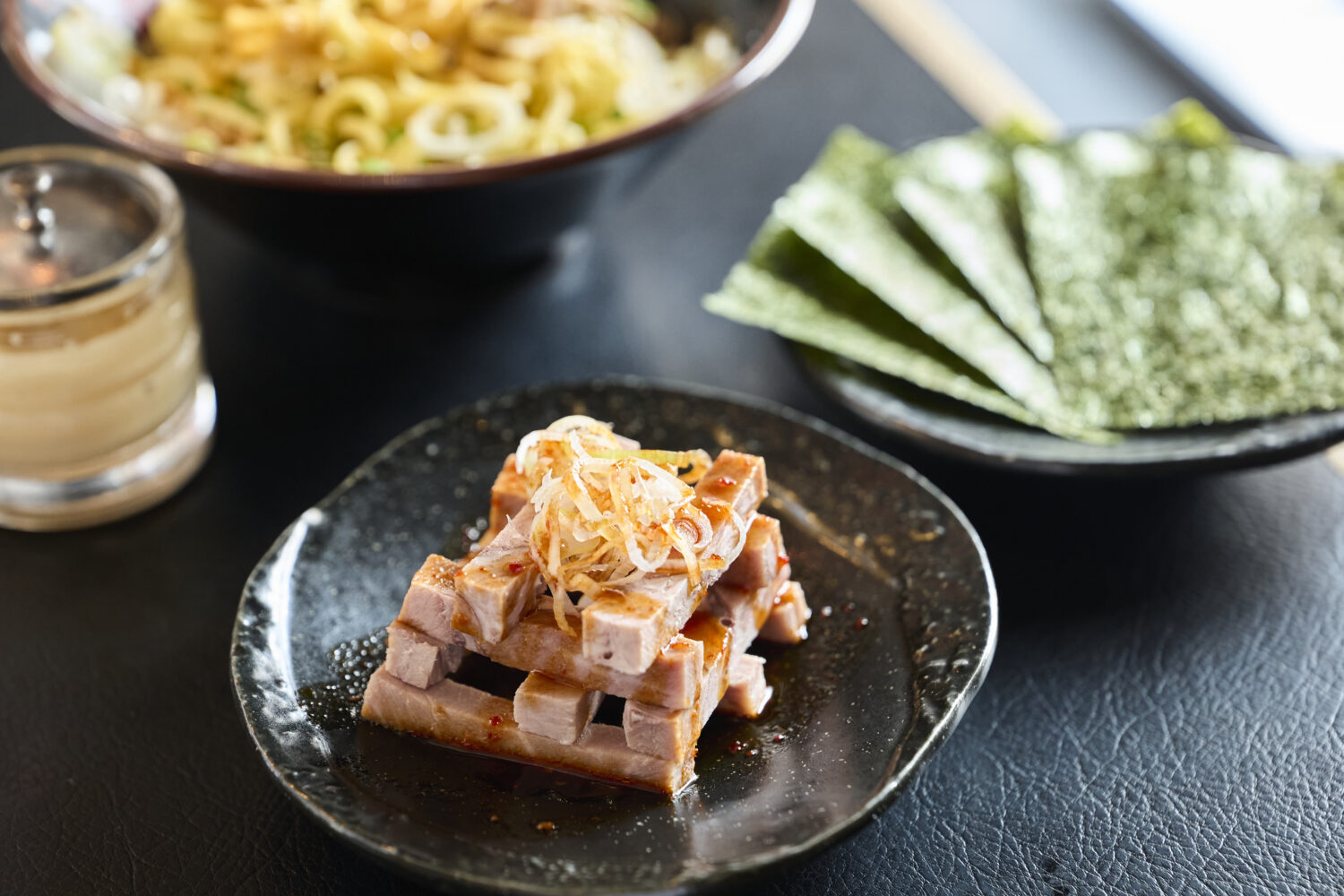
Here’s another “secret” order. In addition to the chashu (roast pork) served atop abura soba, a tsumami (side dish) chashu format is also offered. Let’s order one of those, with an additional side of yakinori (toasted nori seaweed).
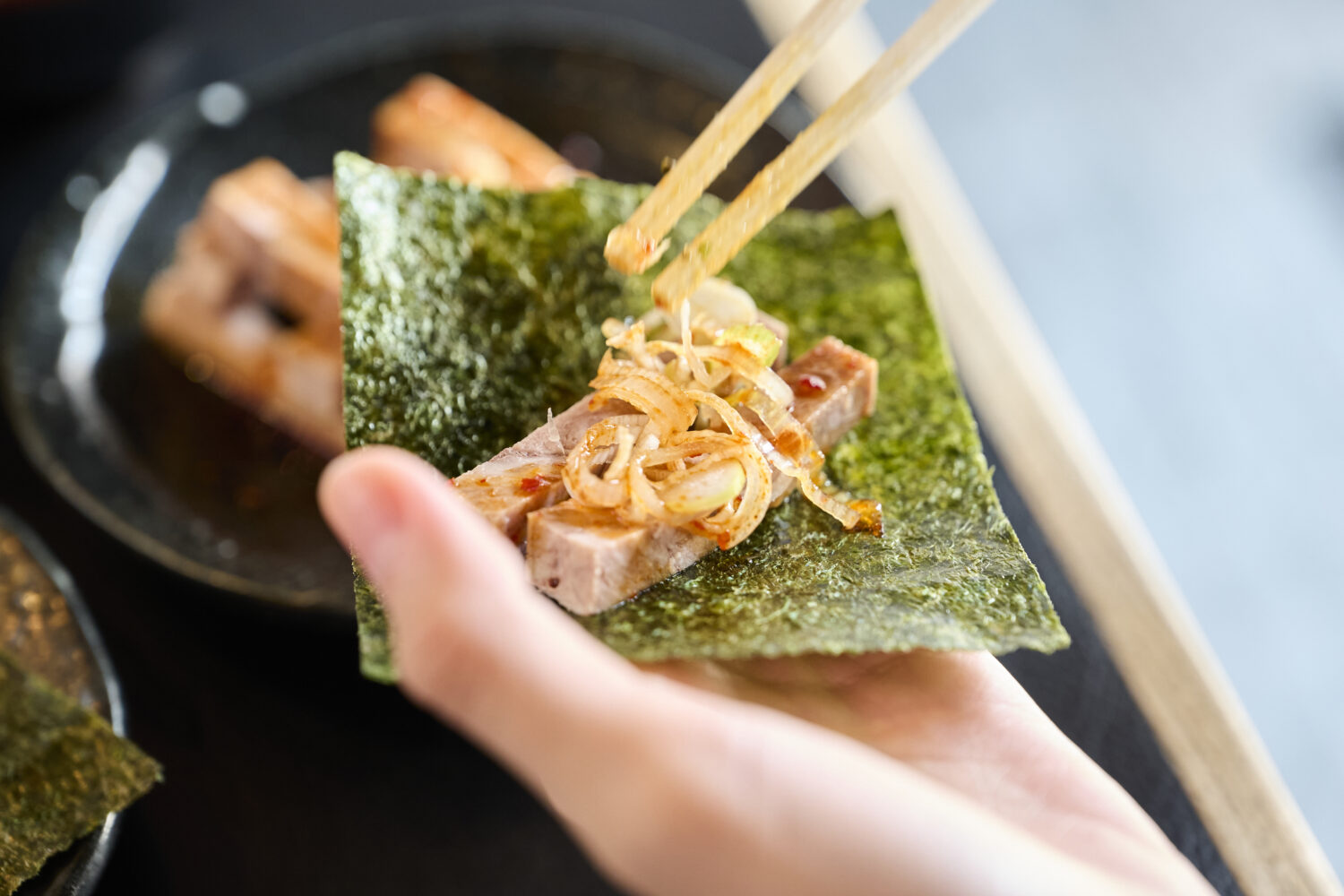
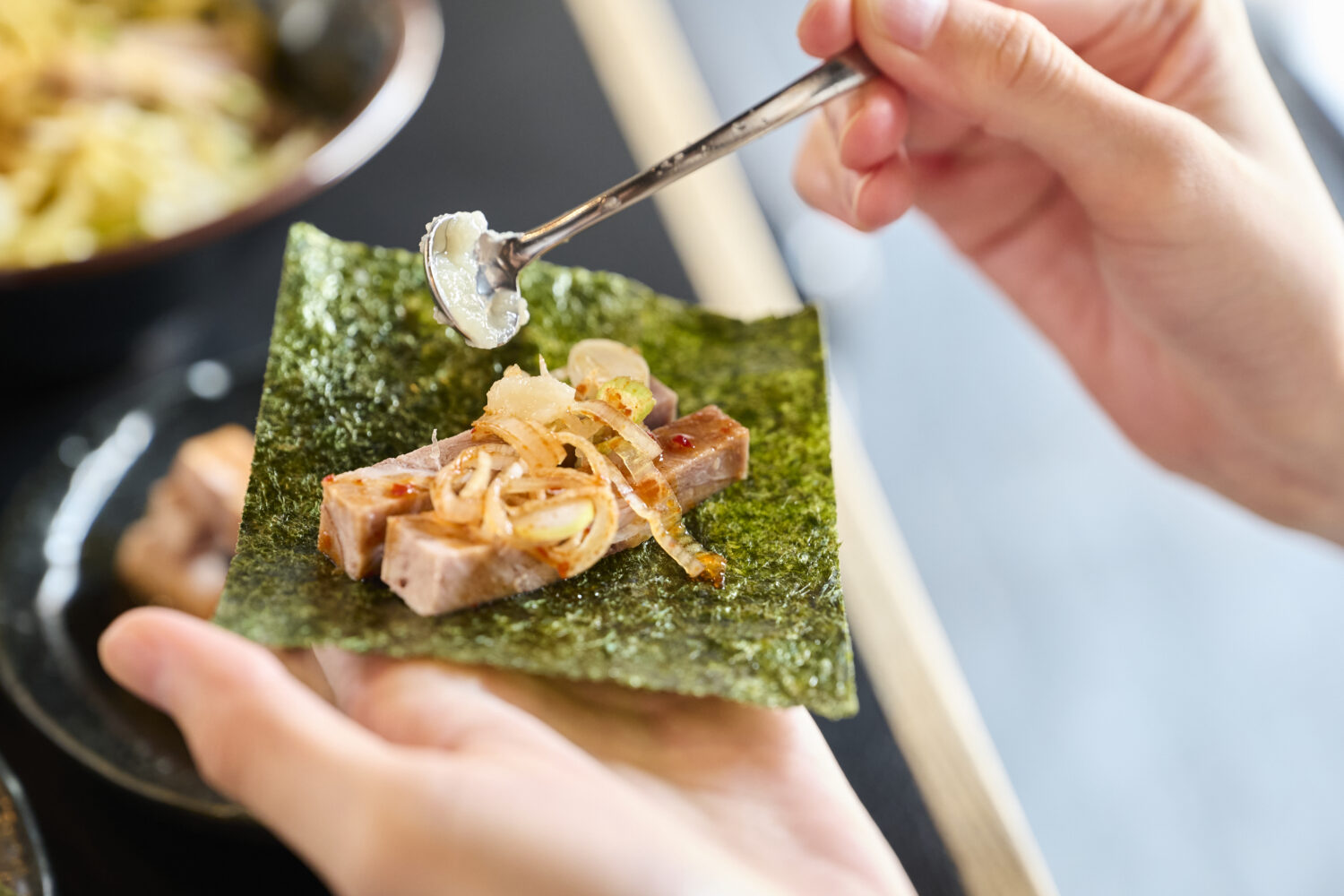
Lay the yakinori on the palm of your hand, stack on some chashu, and add a touch of garlic paste!
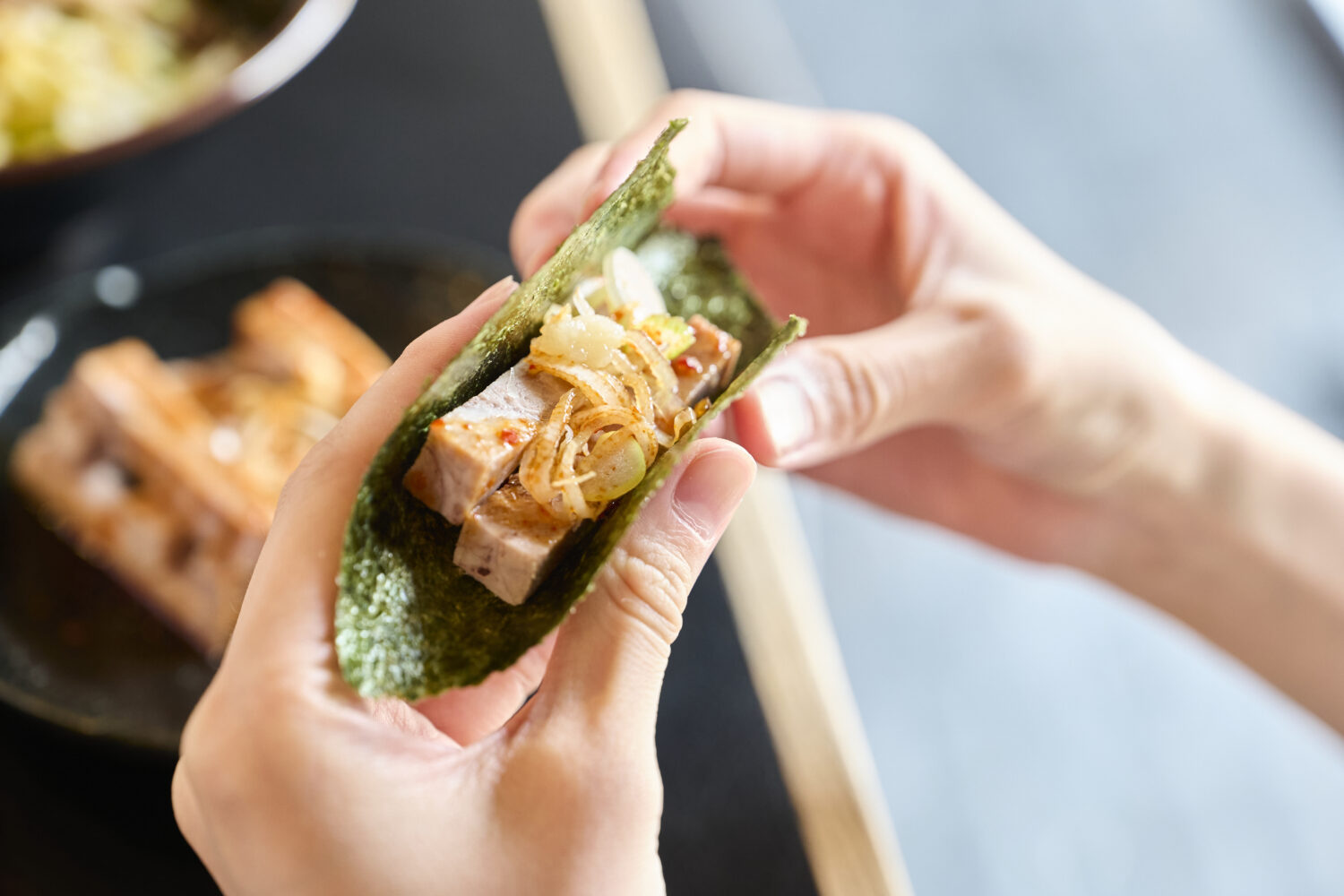
We’ve just created a perfect snack to go alongside beer!
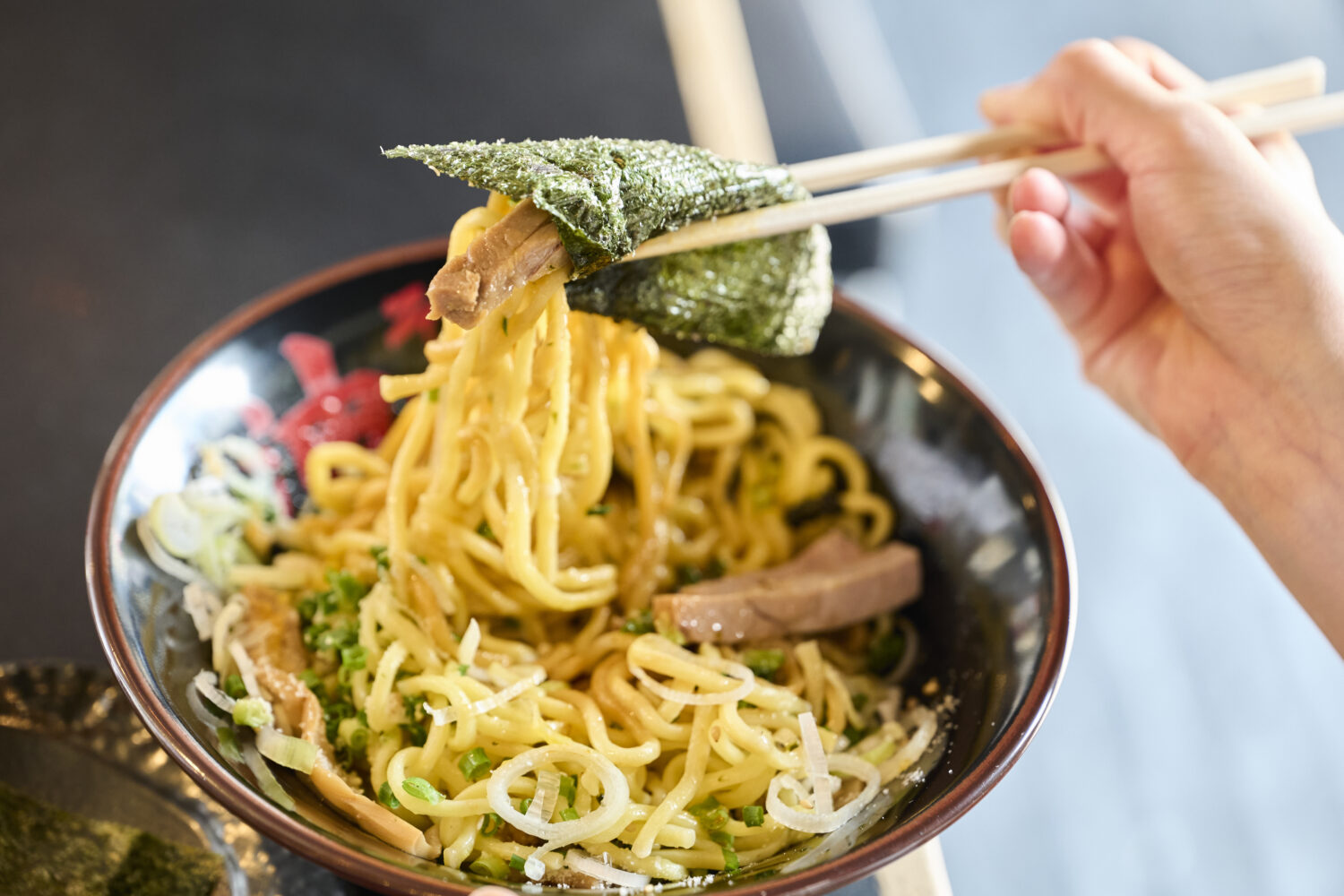
Or, try it together with abura soba! The great thing about dining at Tokyo Aburagumi Souhonten is that you are free to explore styles of eating as you please.

As you may know, abura soba roughly translates to “oil noodle”. Regular patrons jokingly refer to enjoying this dish as “kyuyu”, which means “going in for a top-up of oil”. However you call it, abura soba is a dish that should not be missed when you visit Japan!
This abura soba specialty restaurant has now expanded to fifty locations throughout Japan centered on Tokyo, and overseas. Noodles carefully crafted in house come together with a closely-guarded sauce recipe to create an unrivaled harmony of flavor and texture. A wide selection of toppings are offered for further variety and enjoyment.
*The information is based on the time of reporting or creation, and may differ from the current situation.
share:










